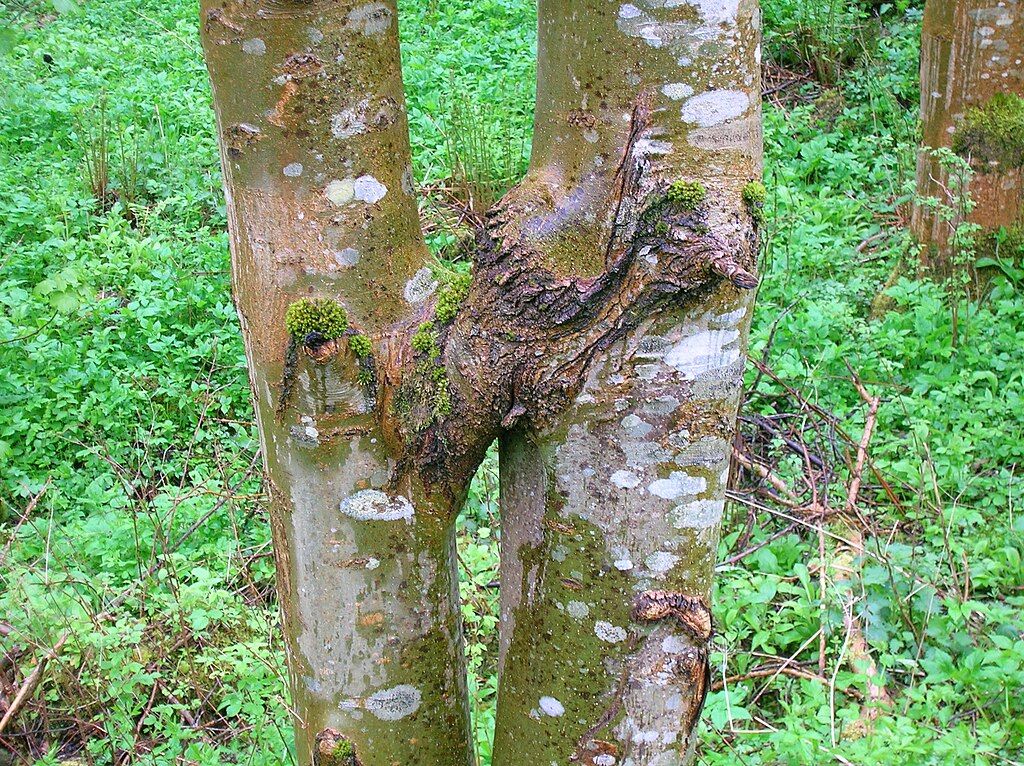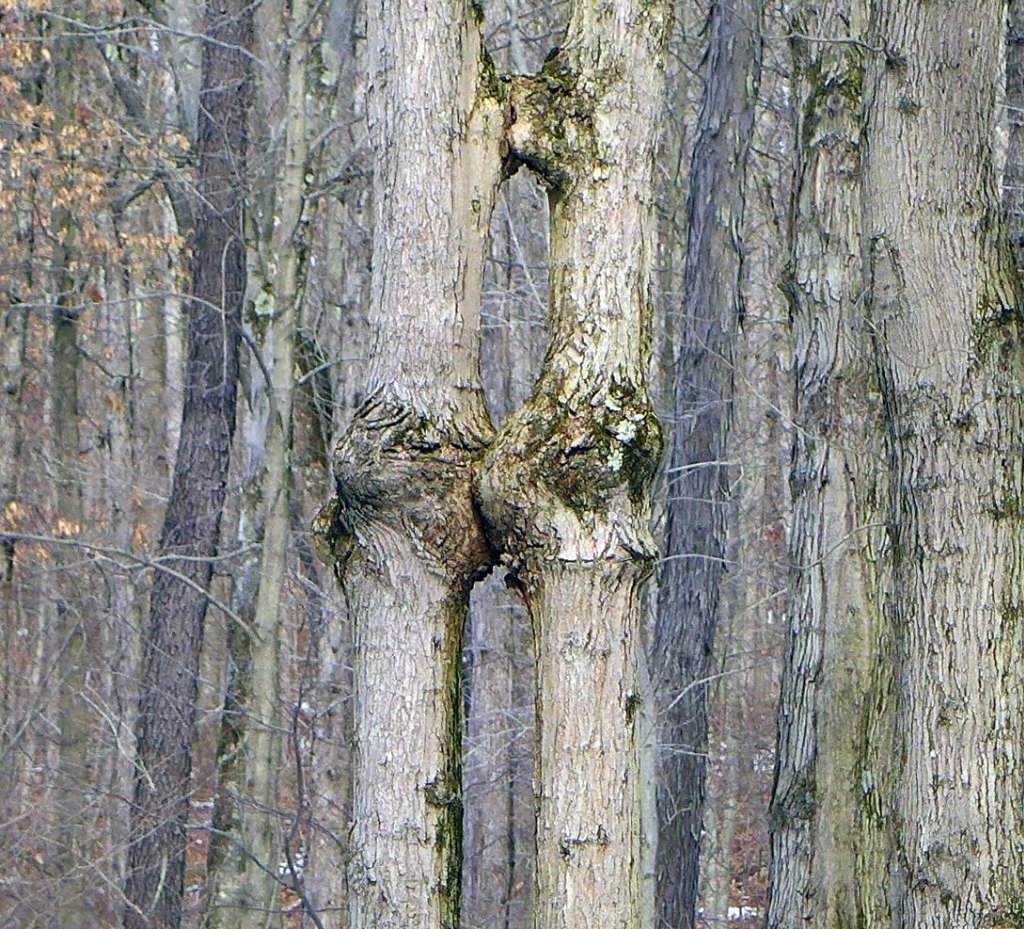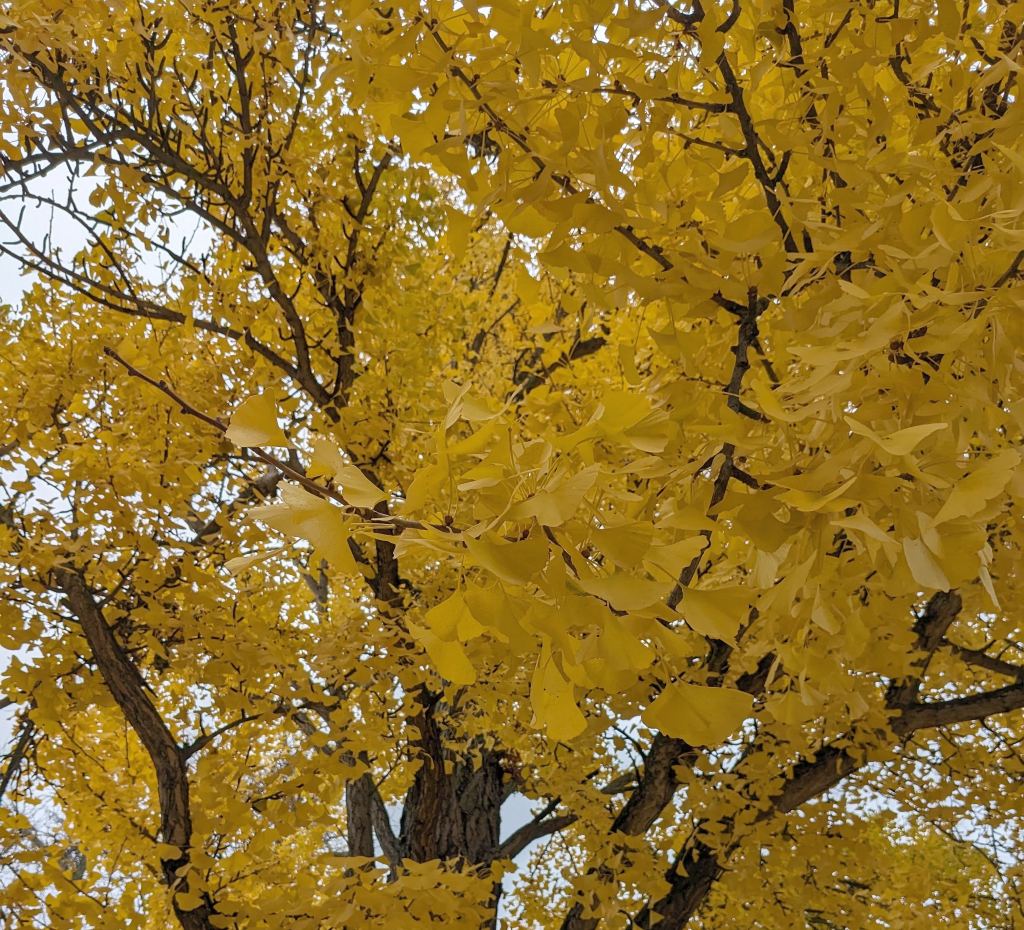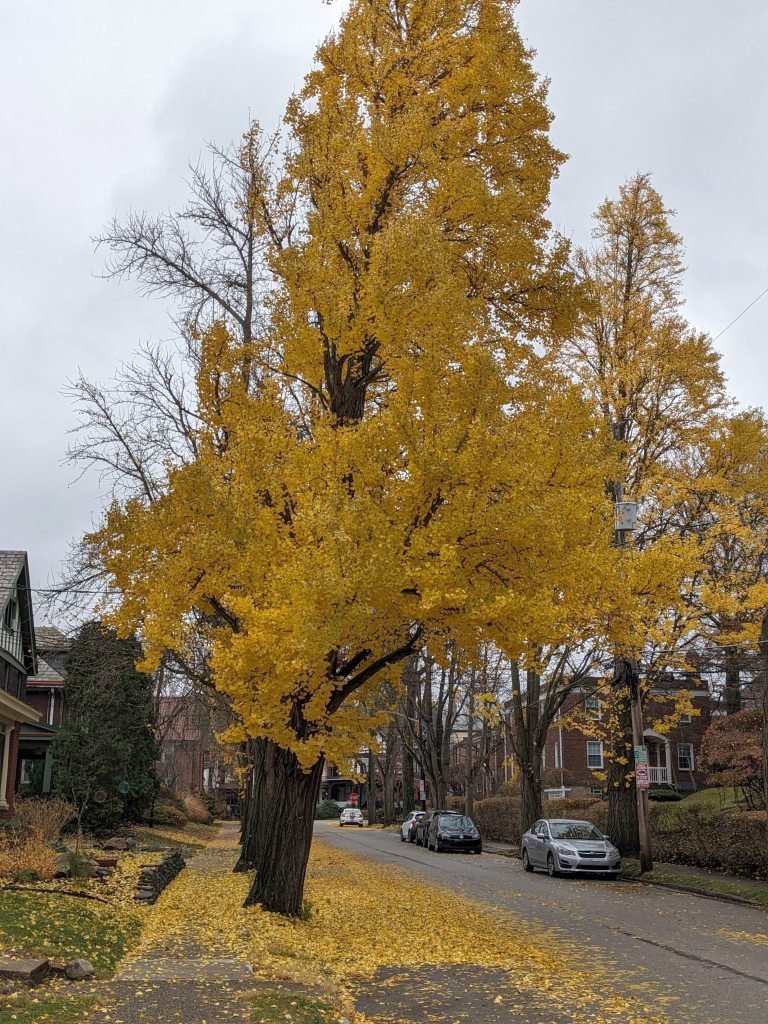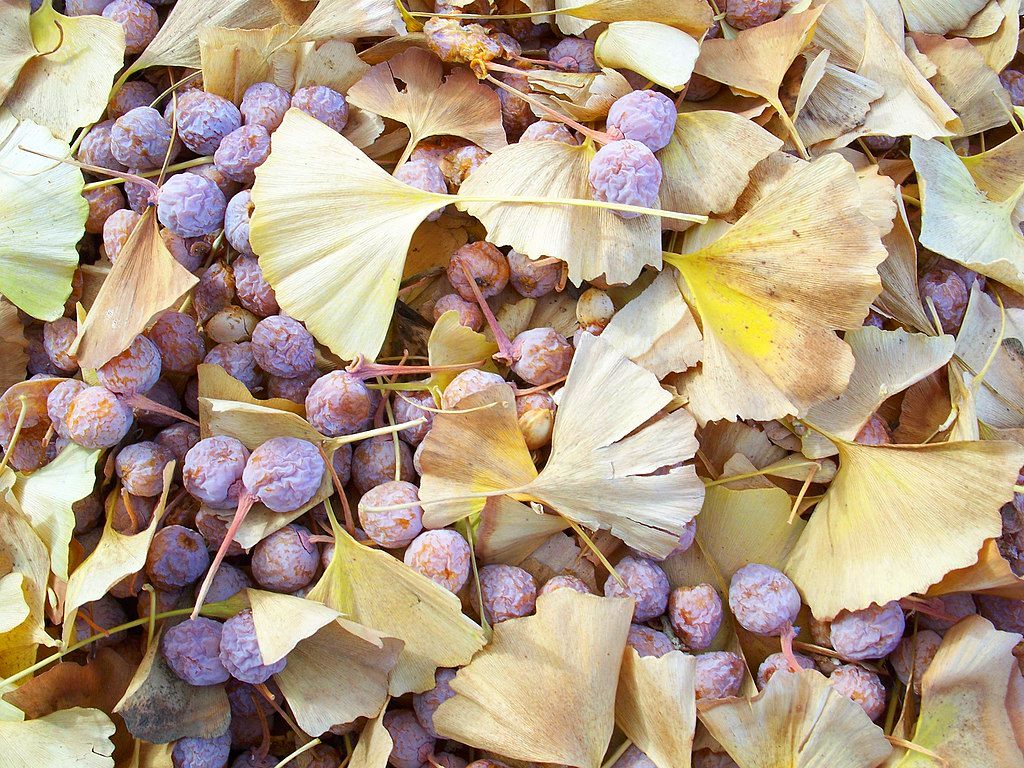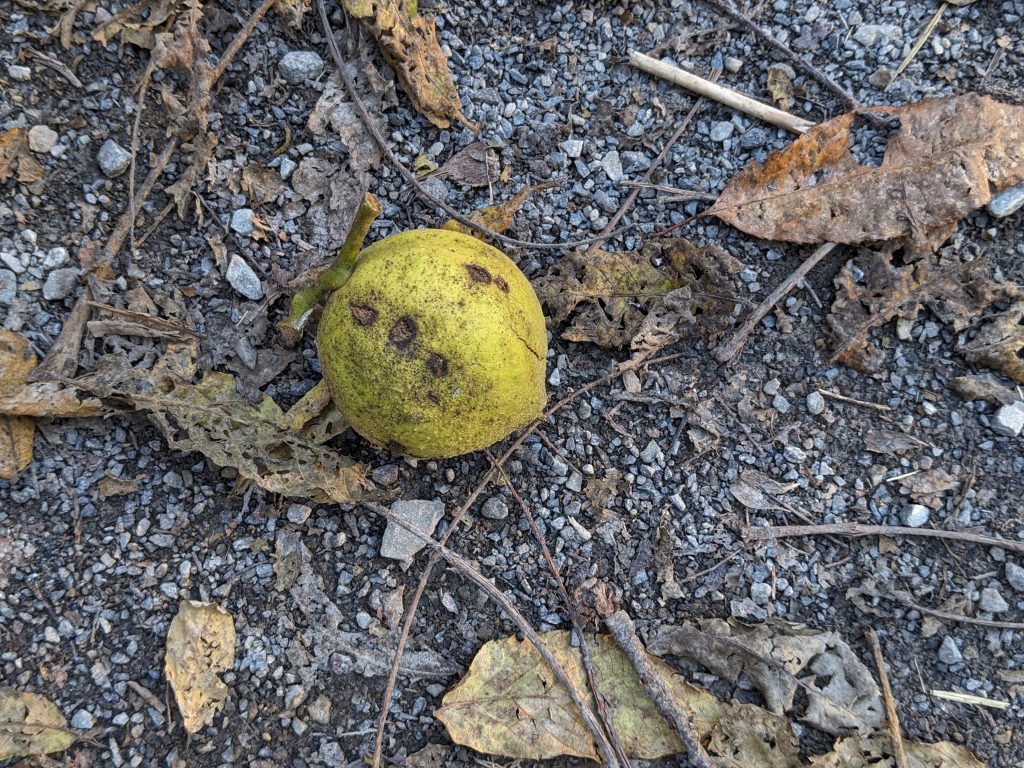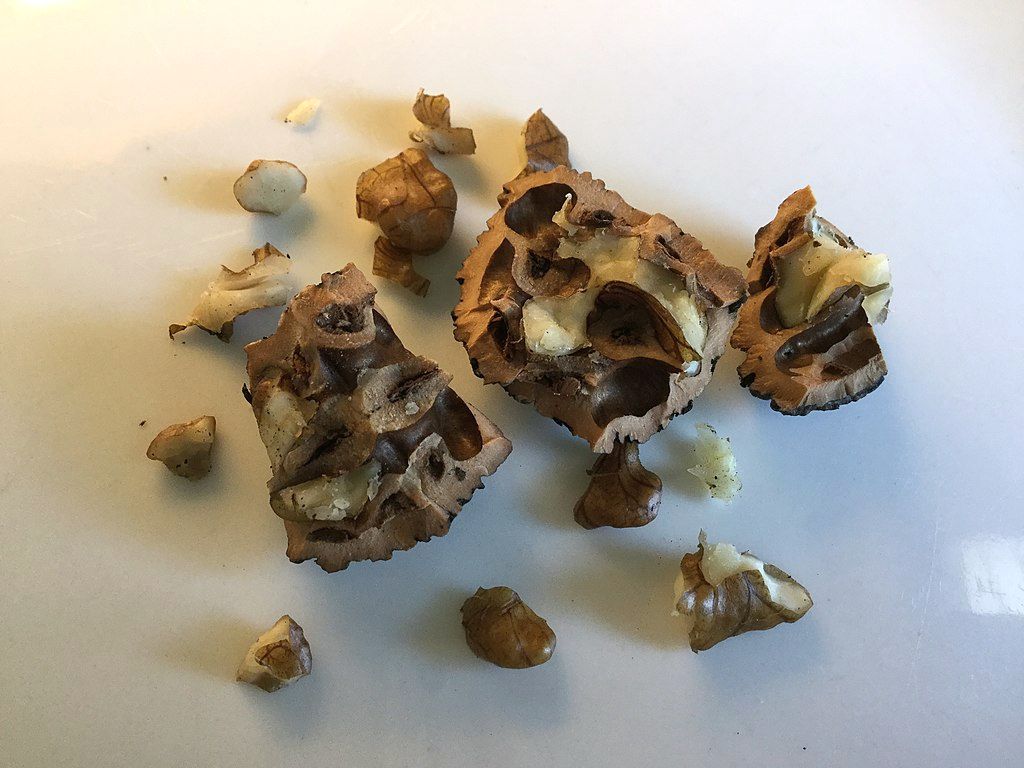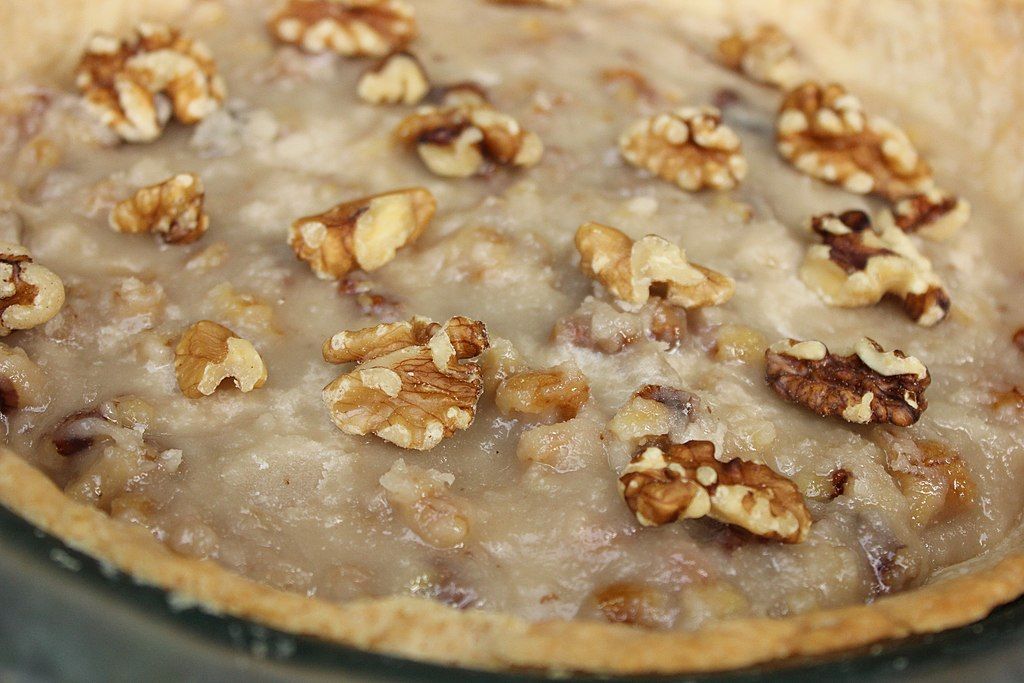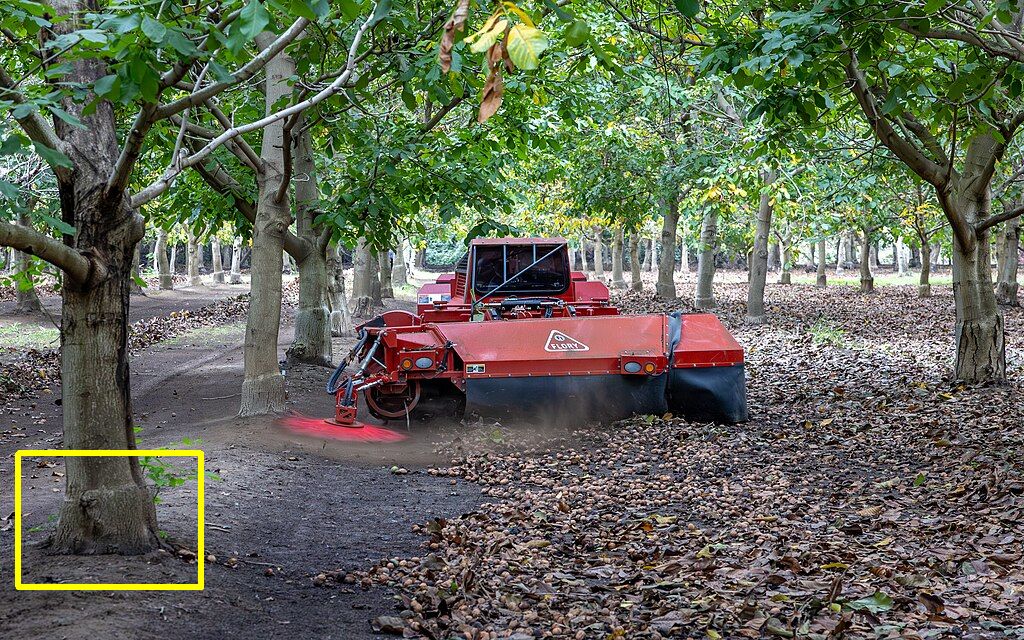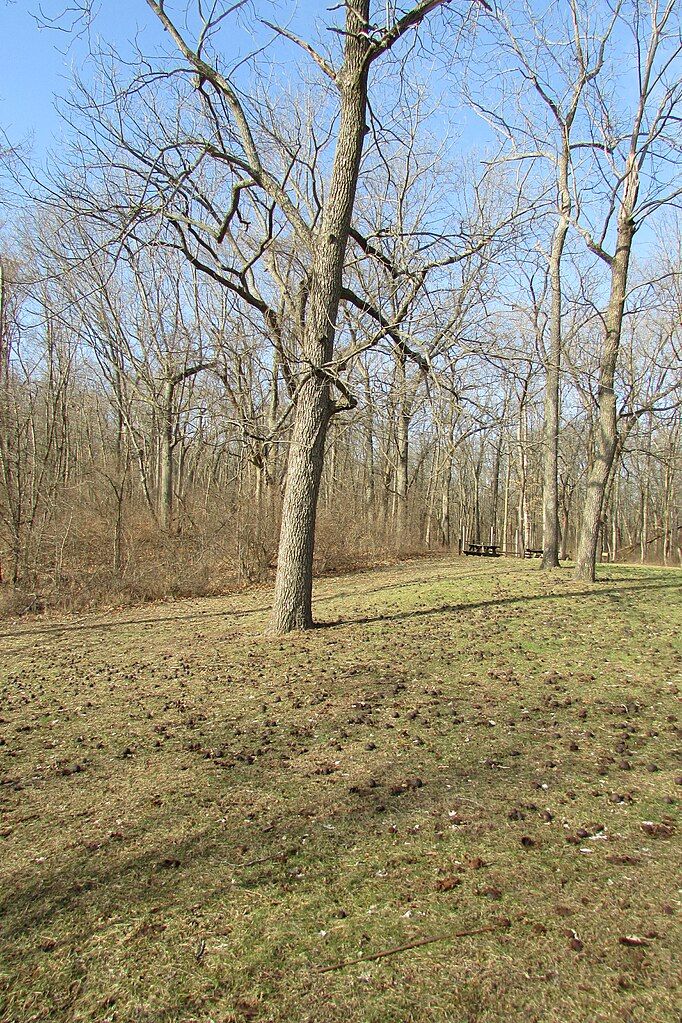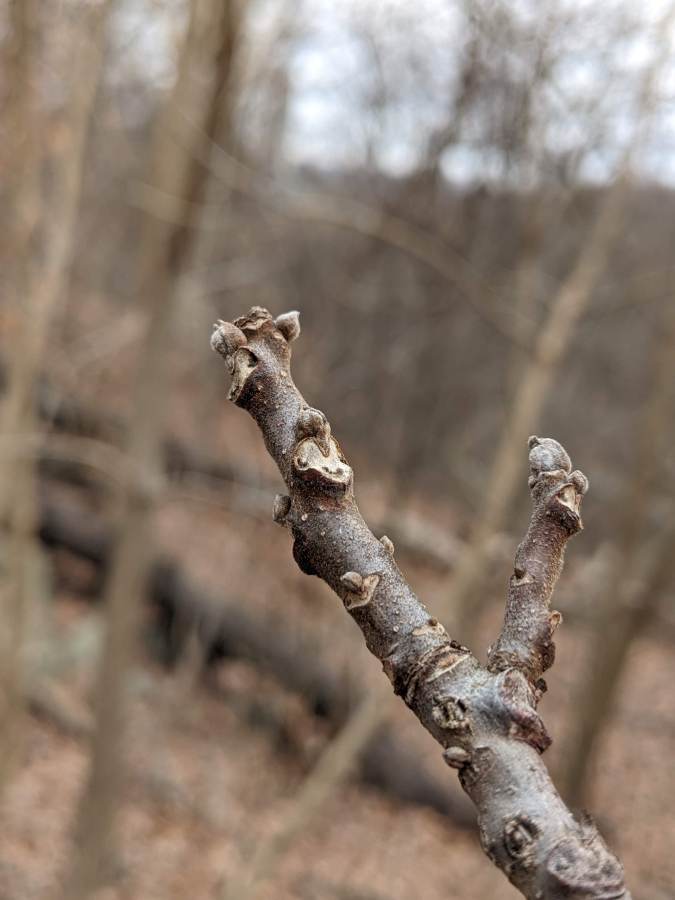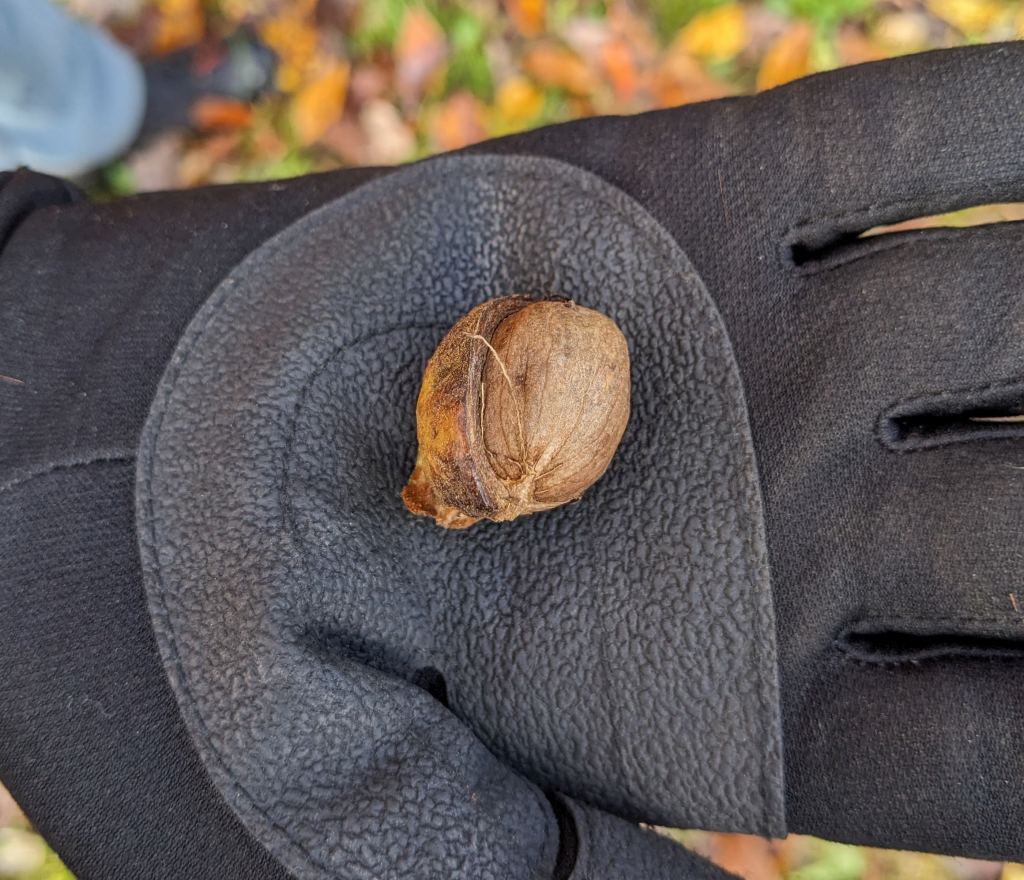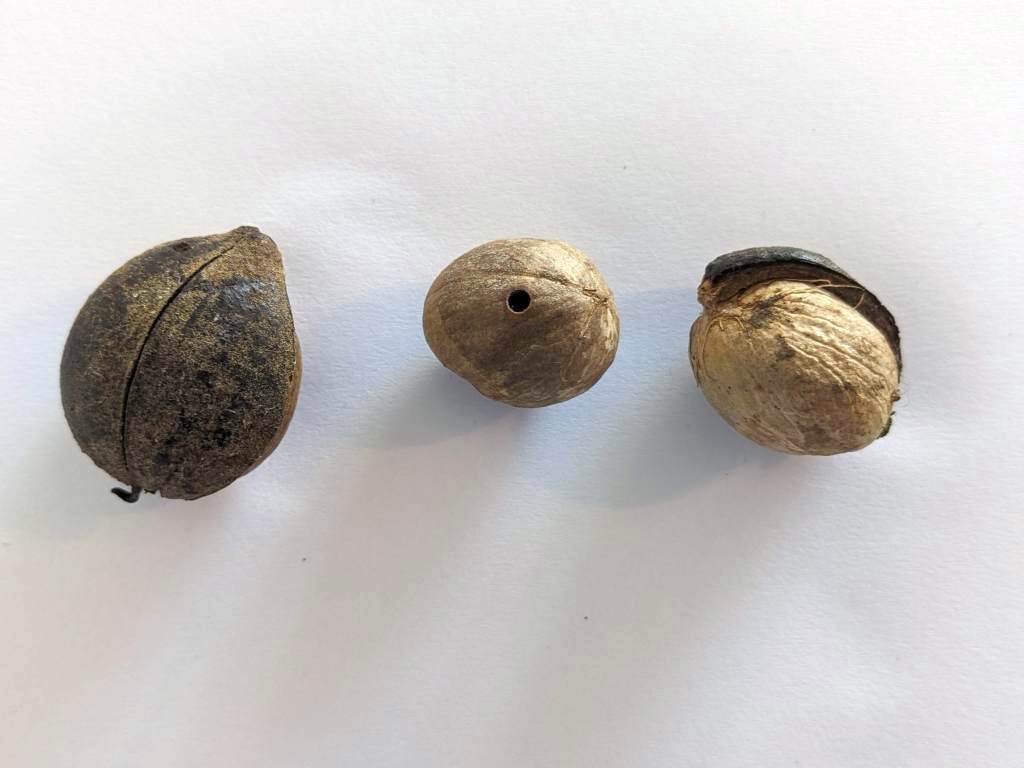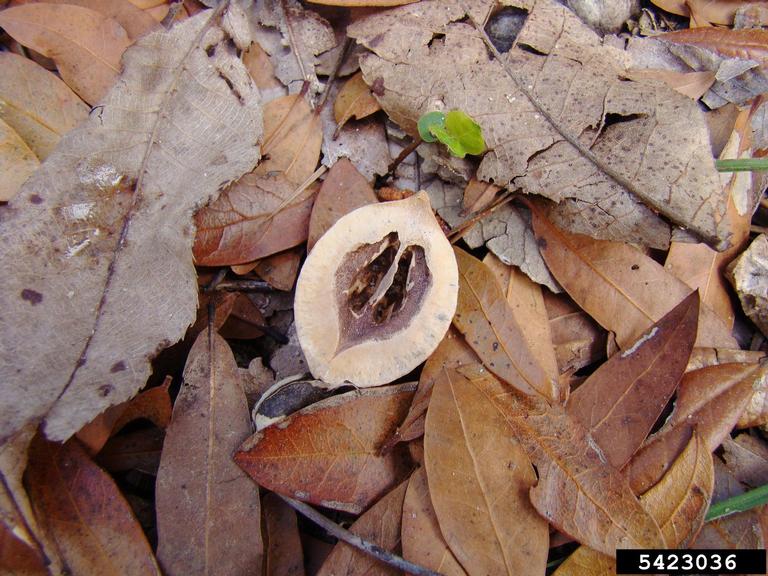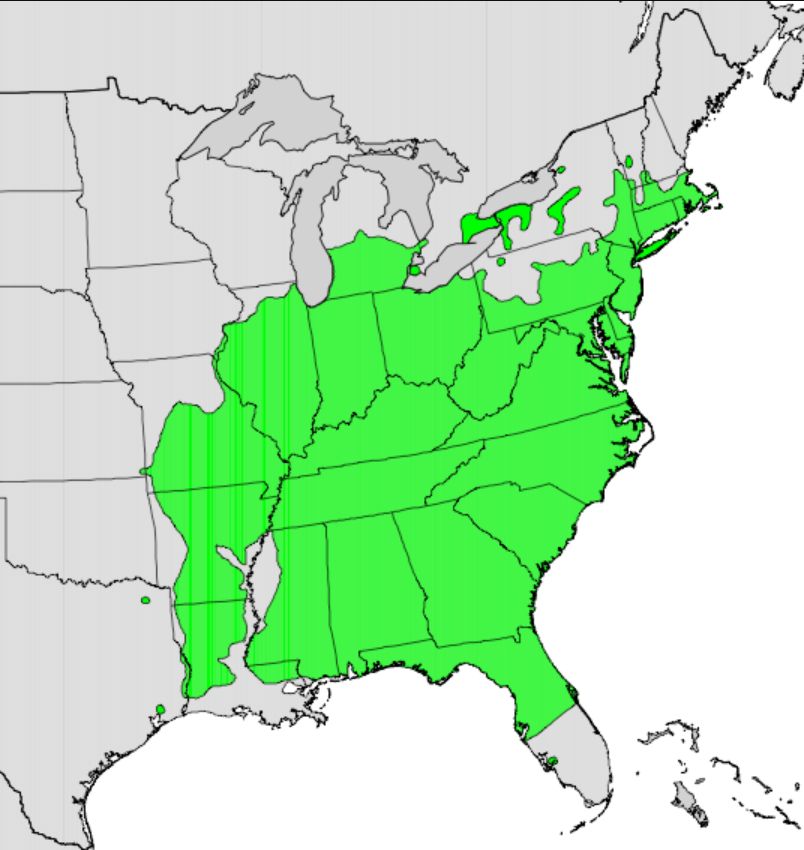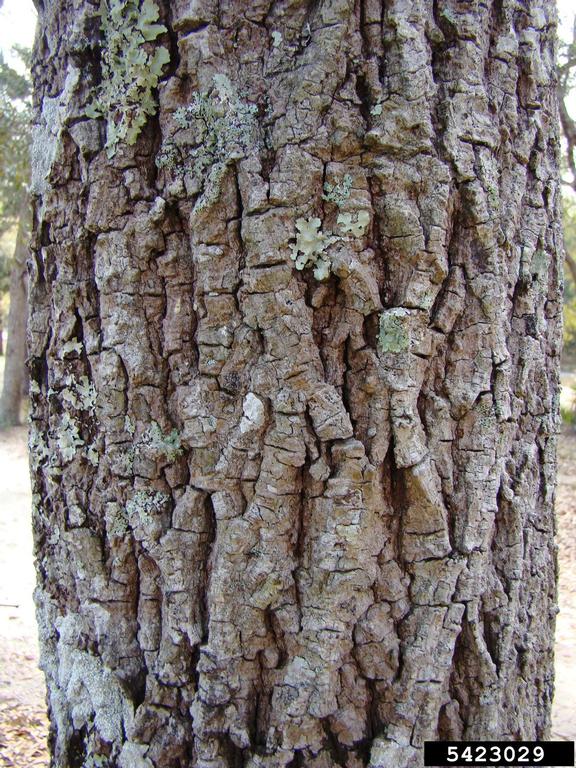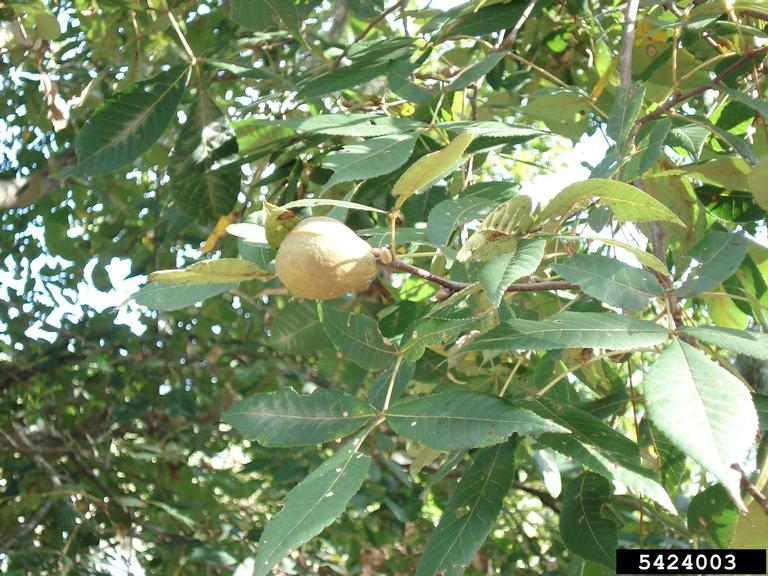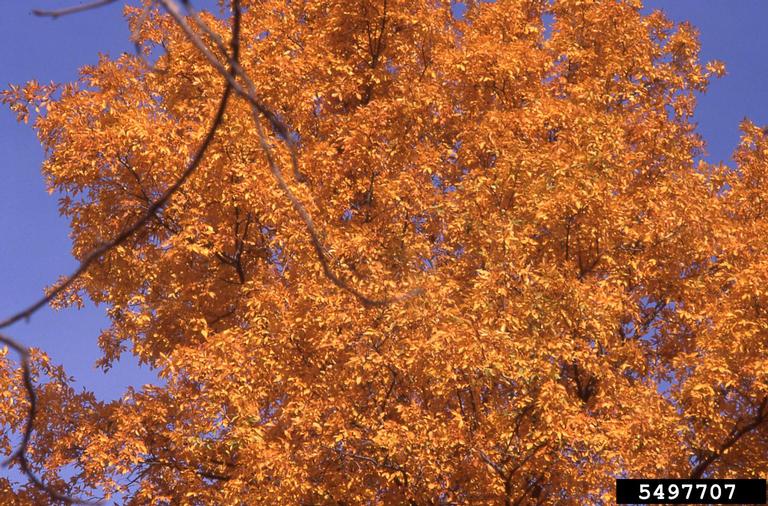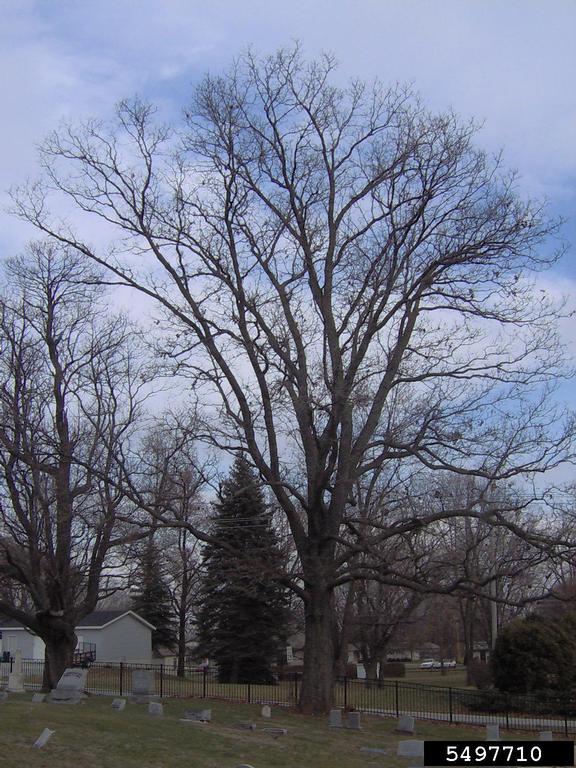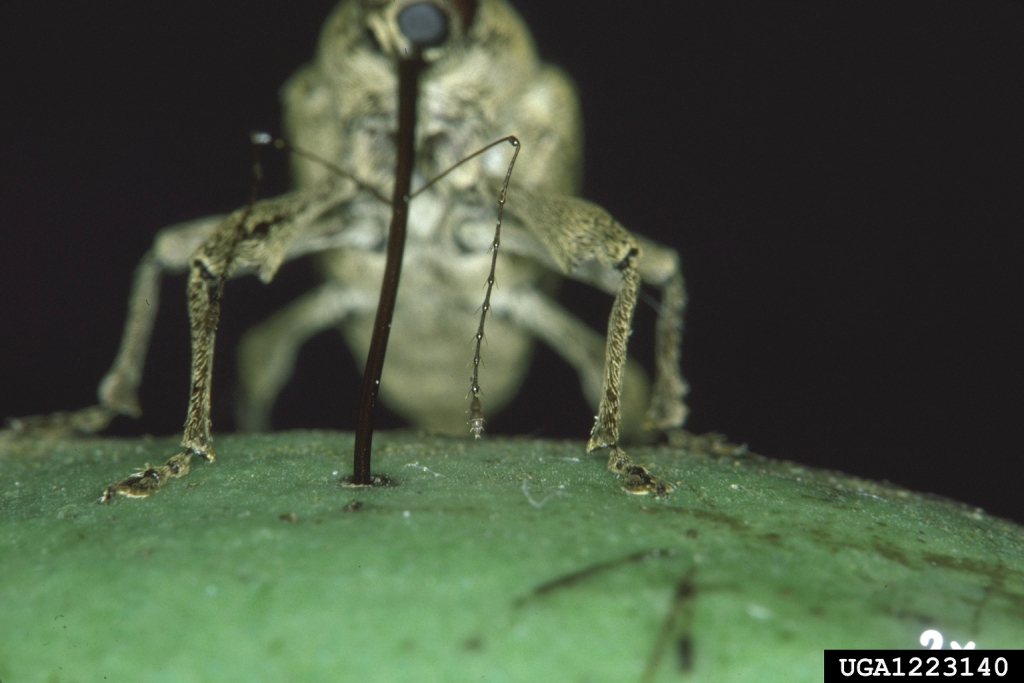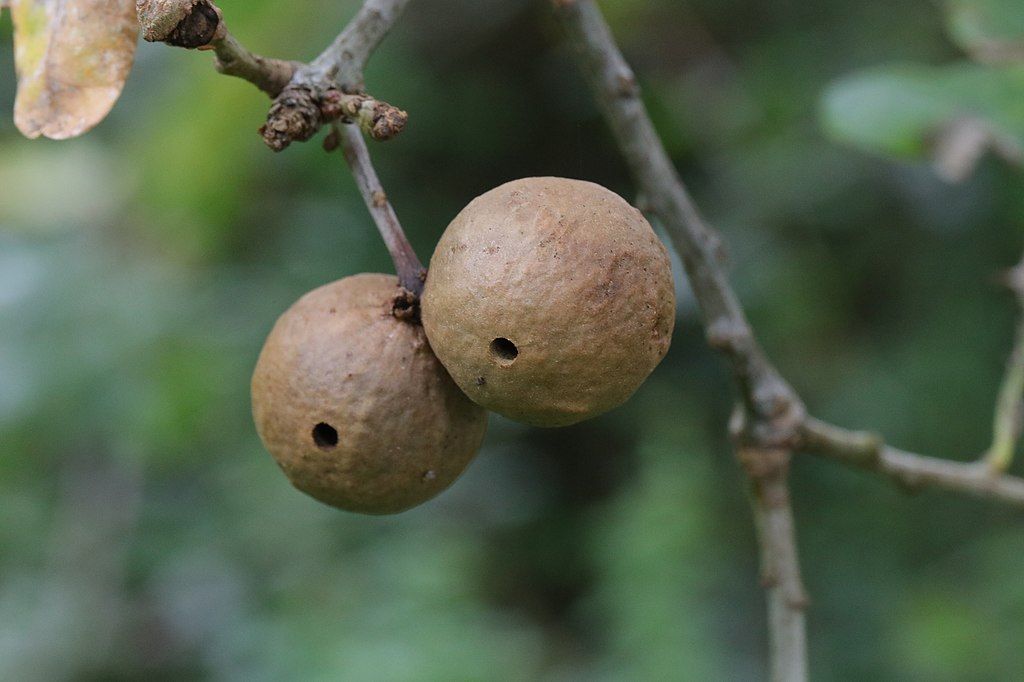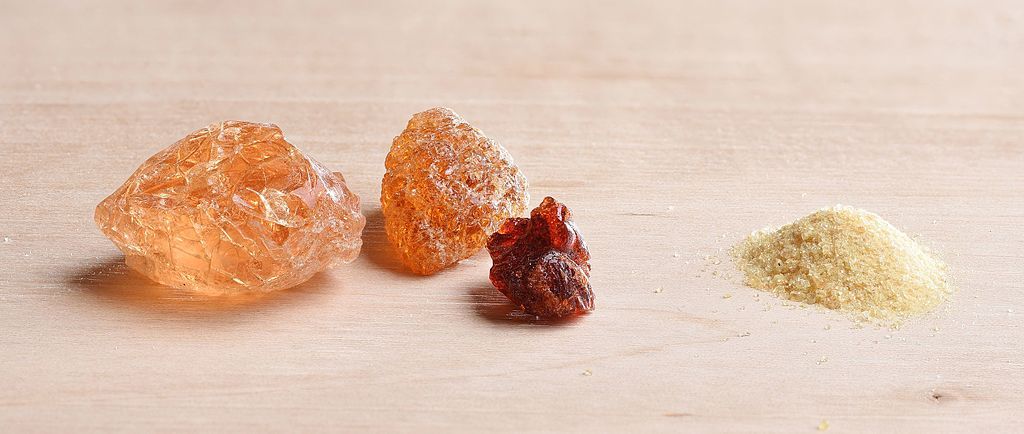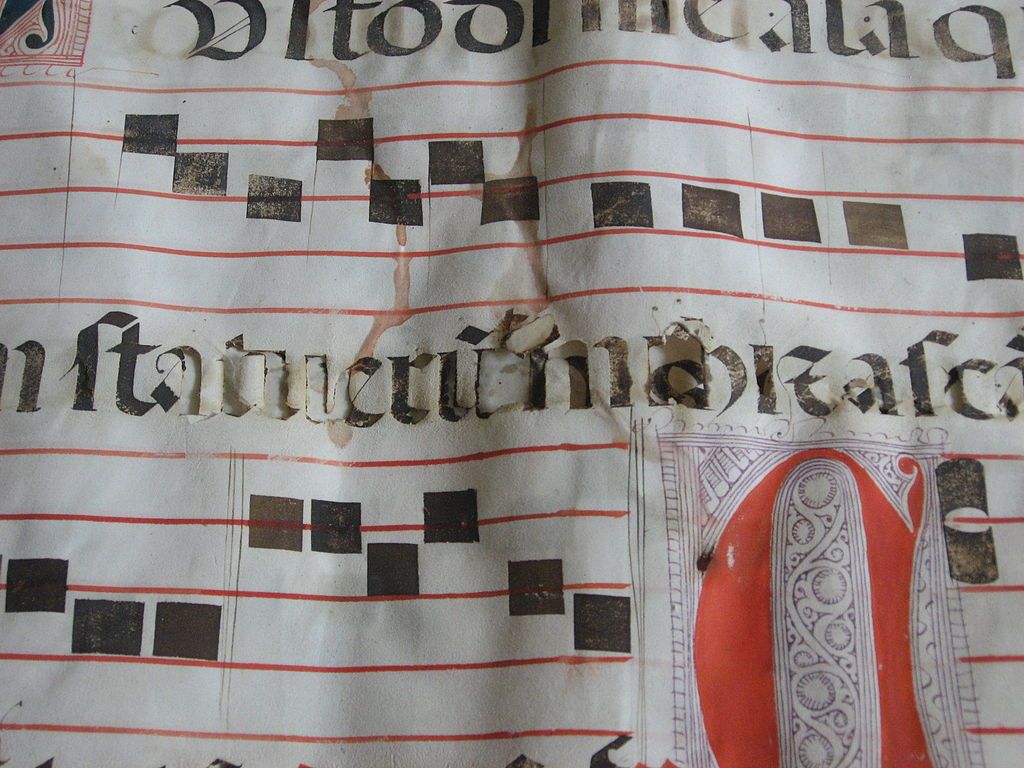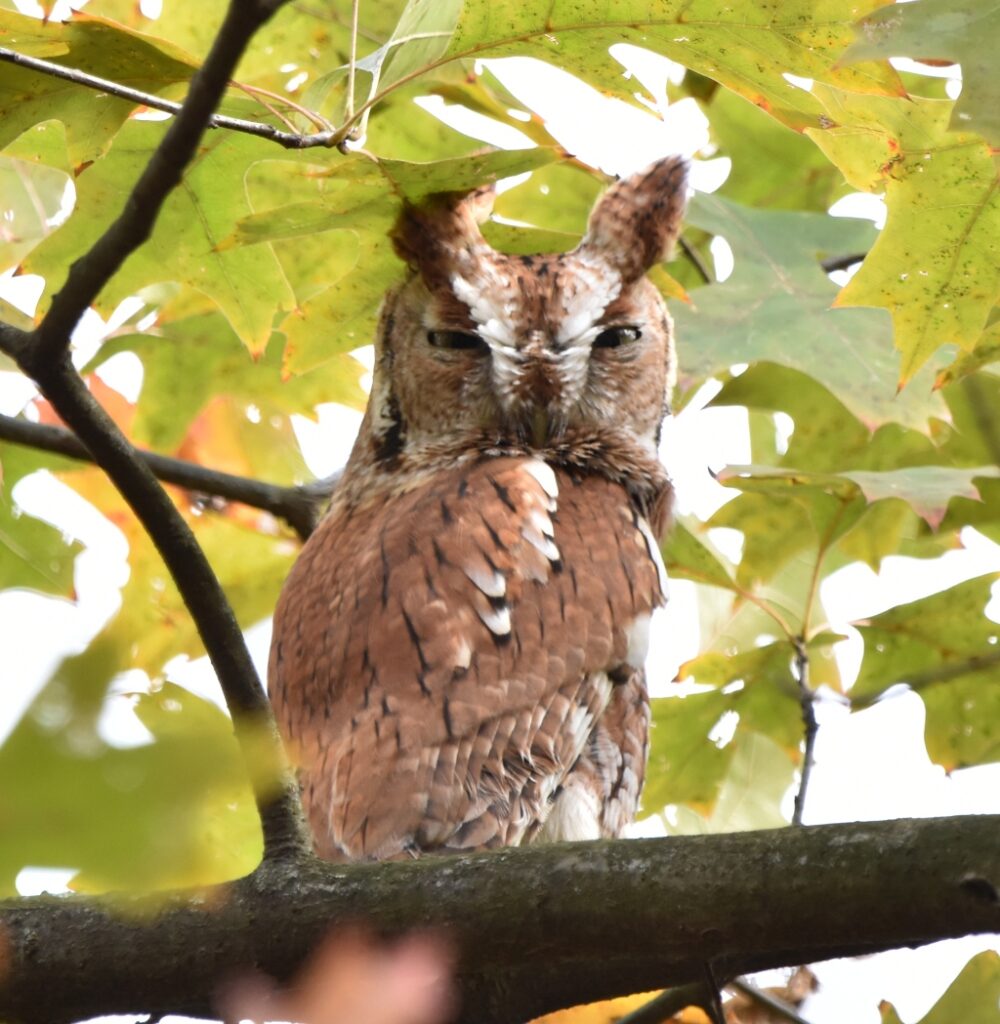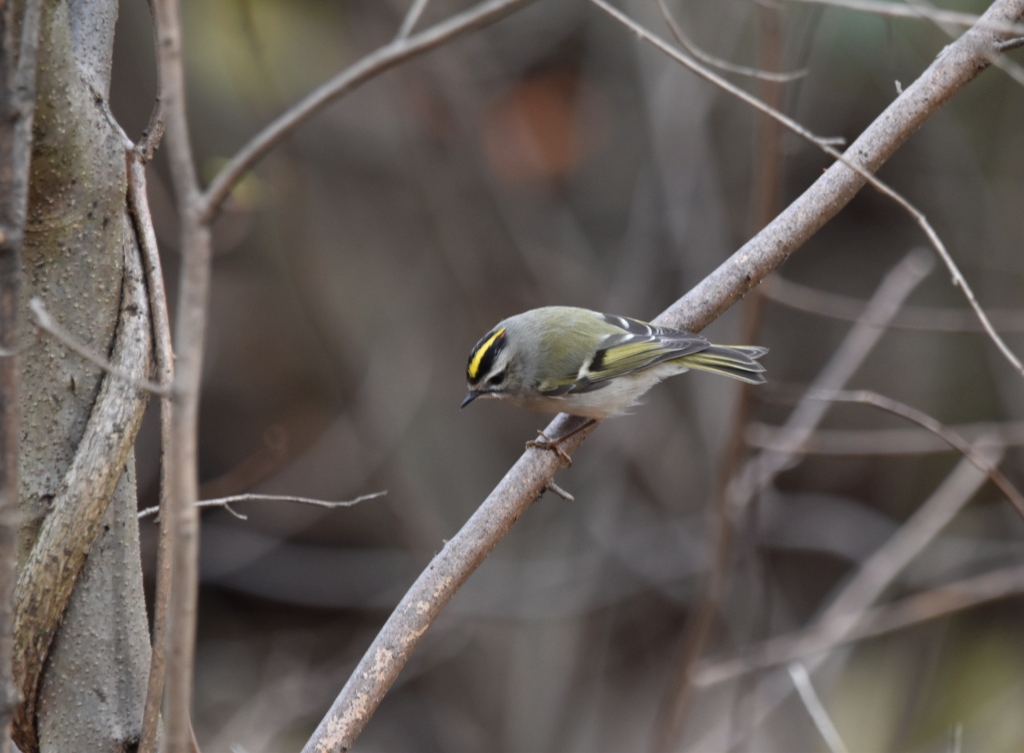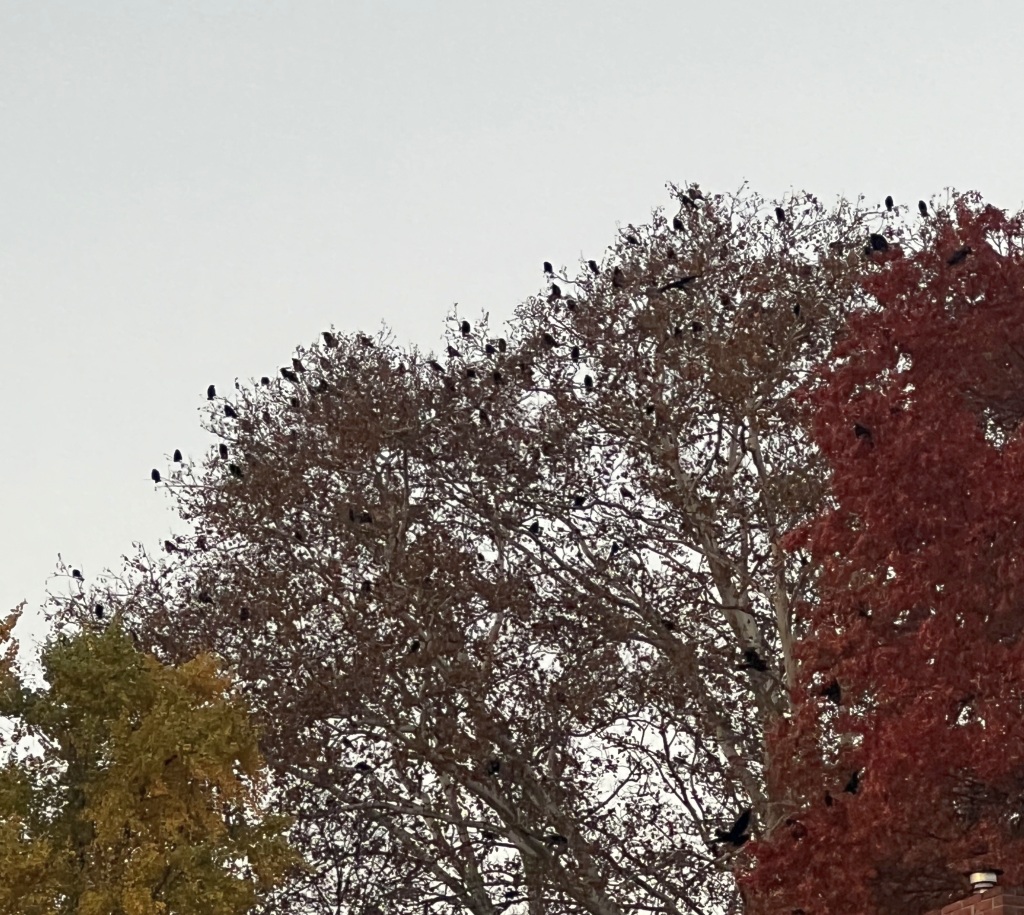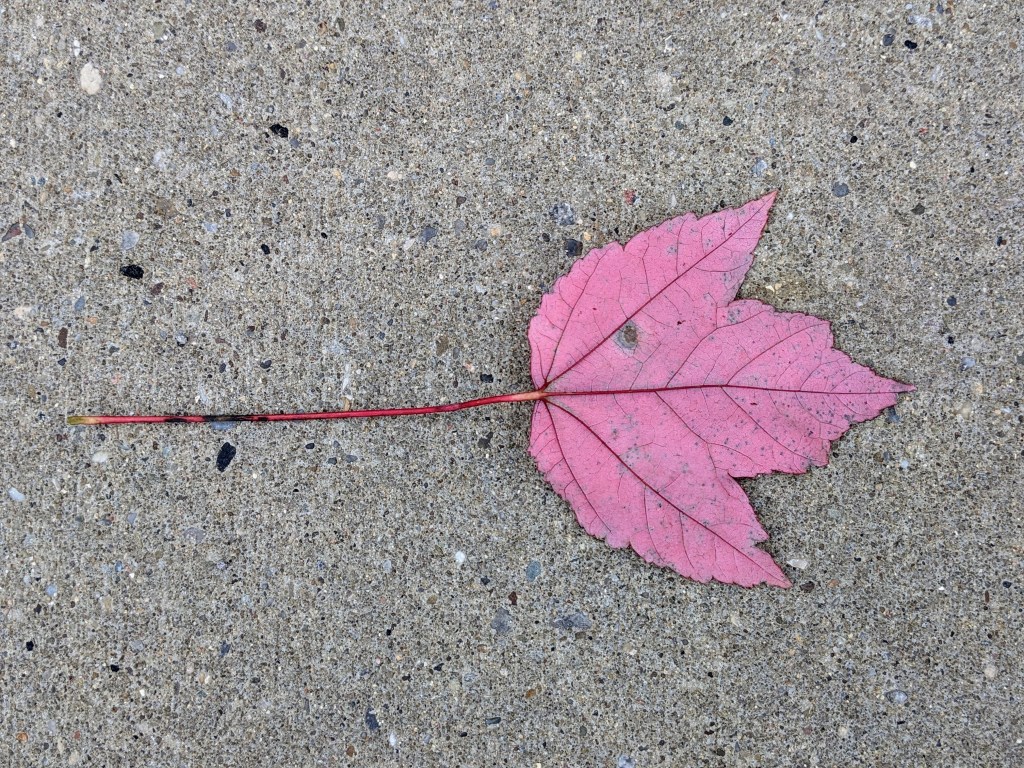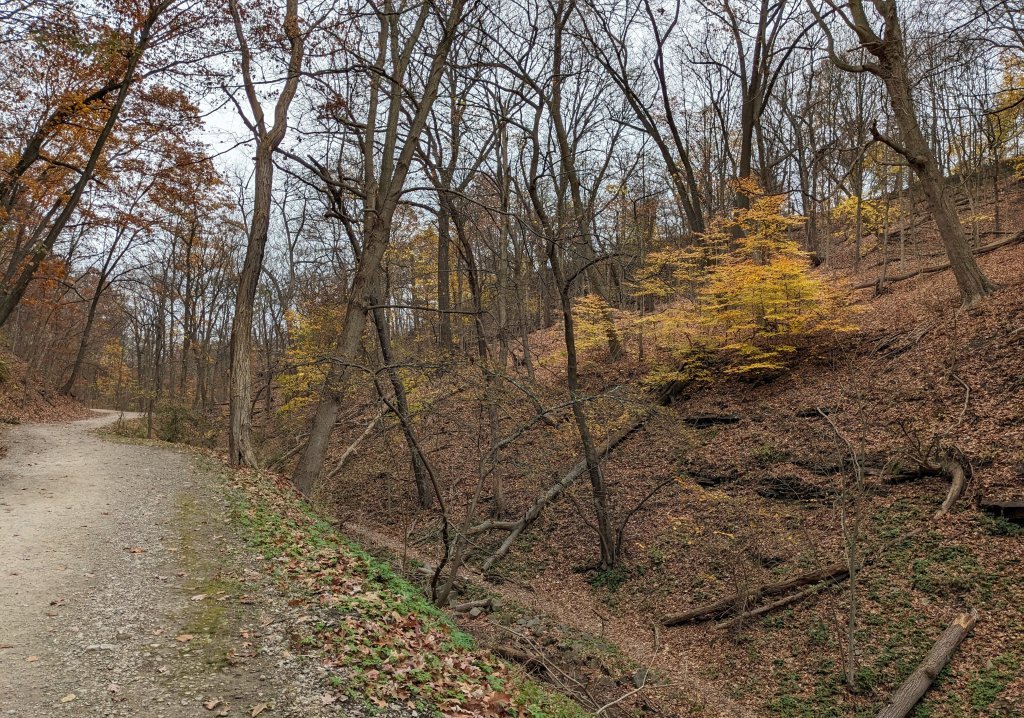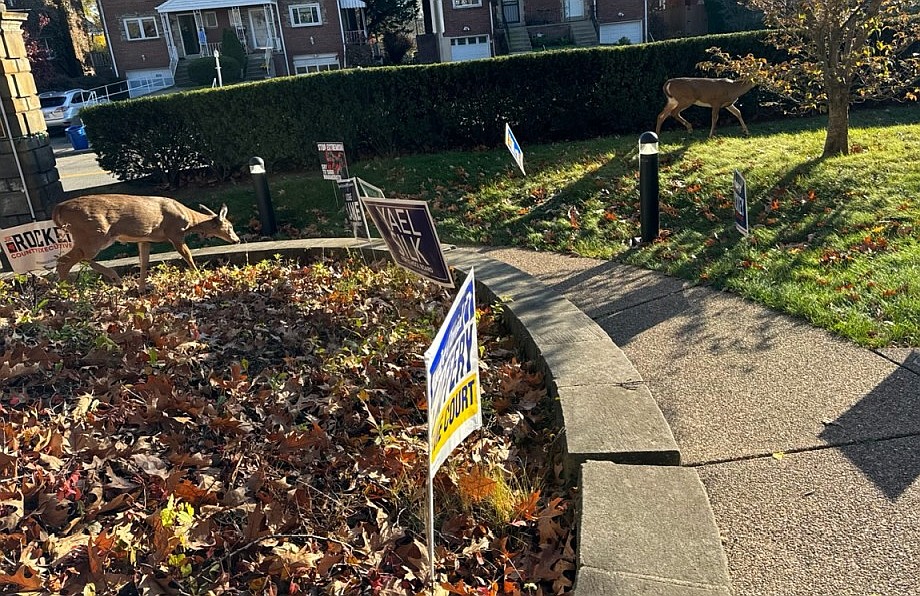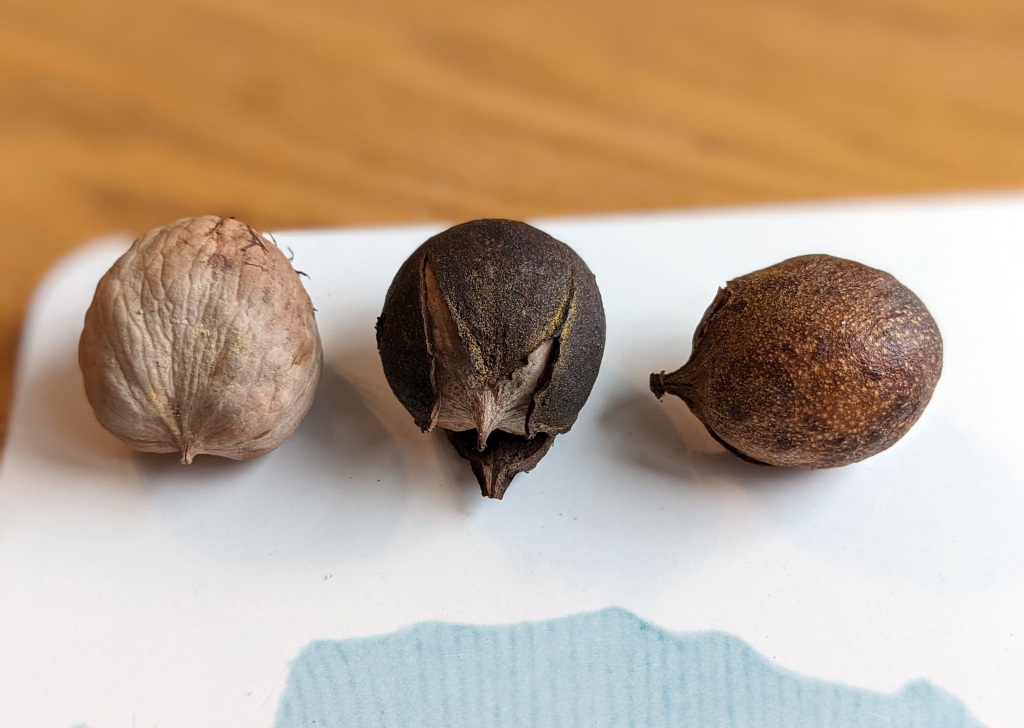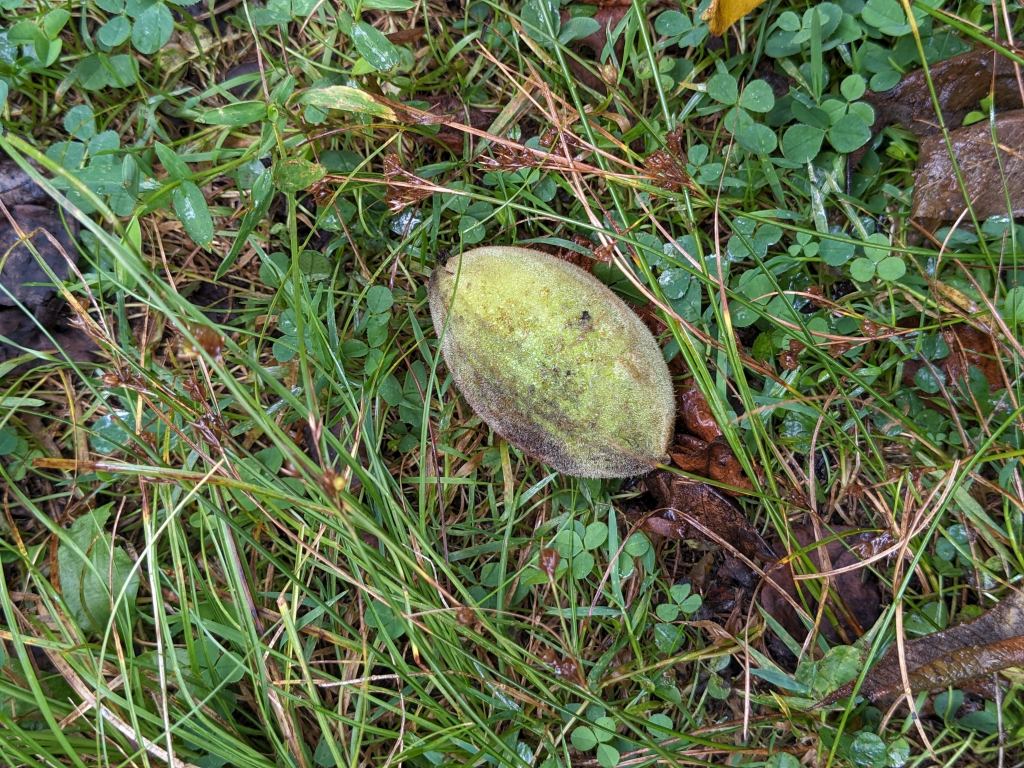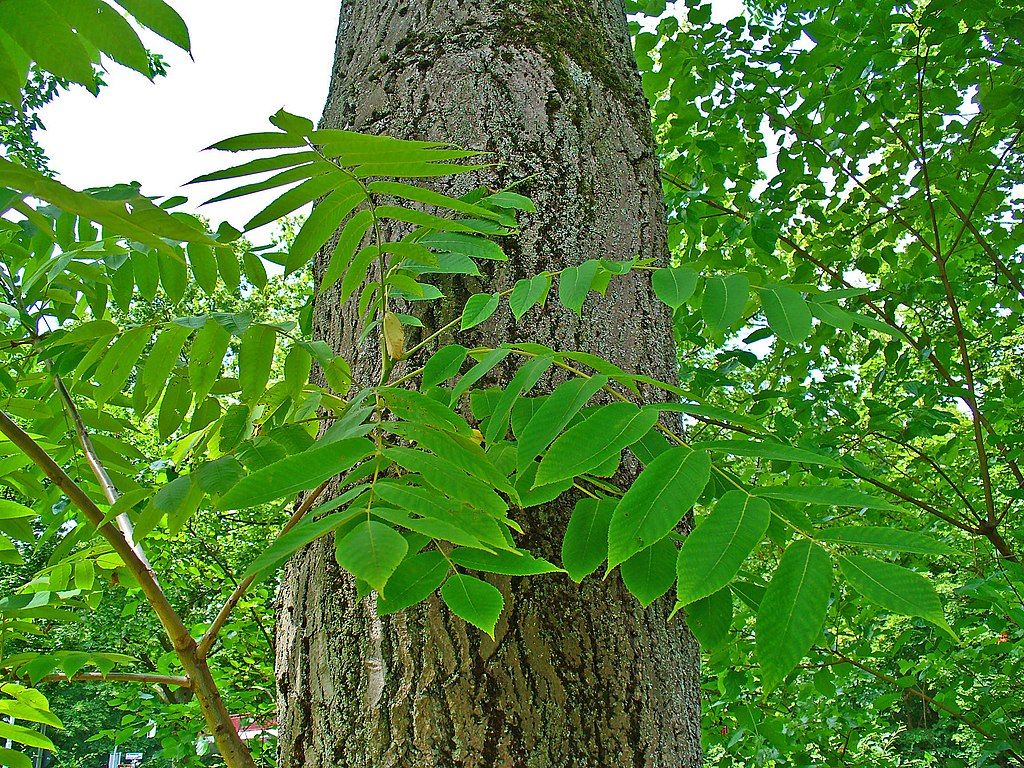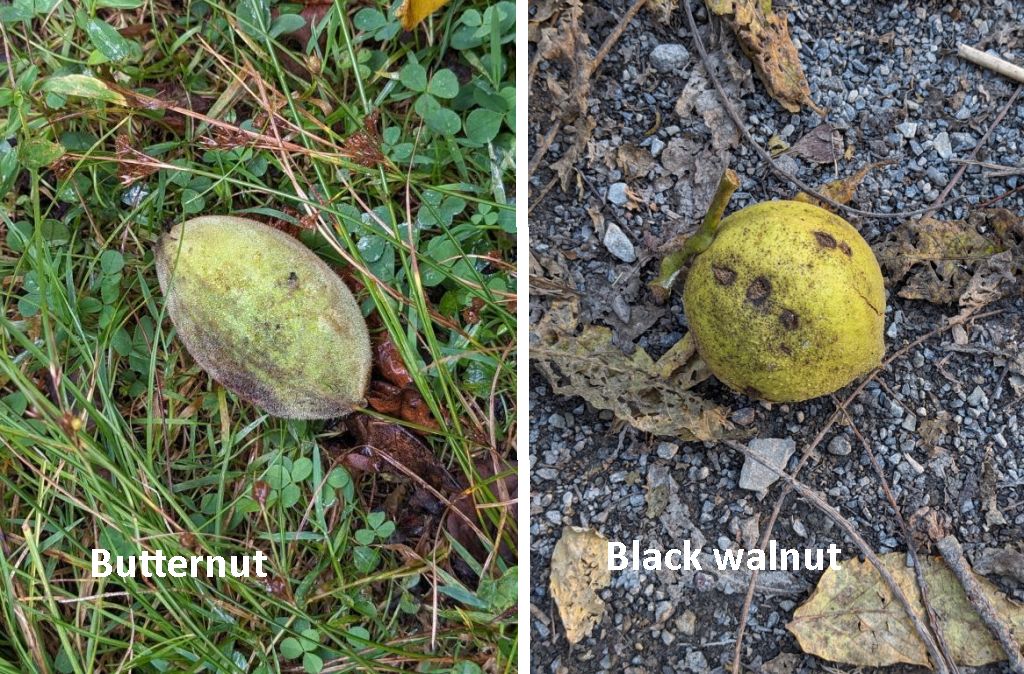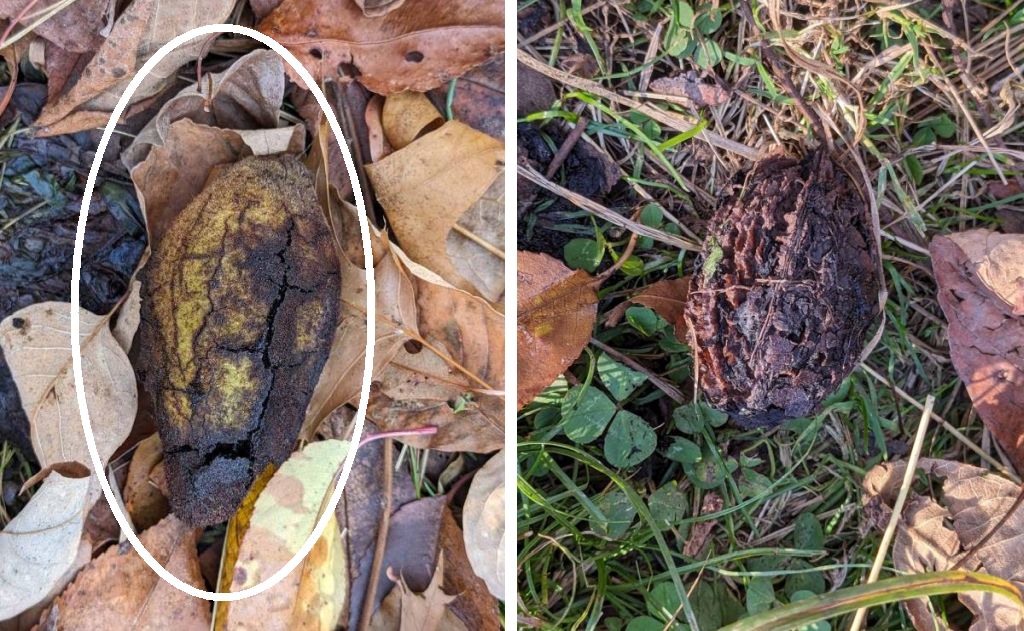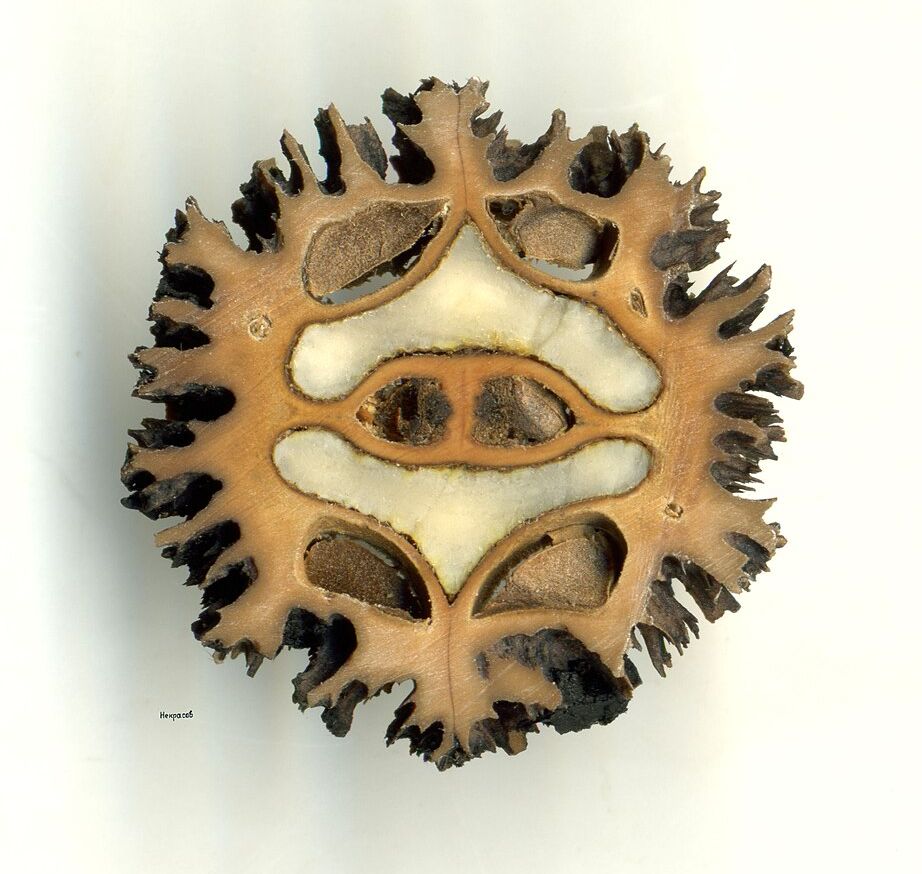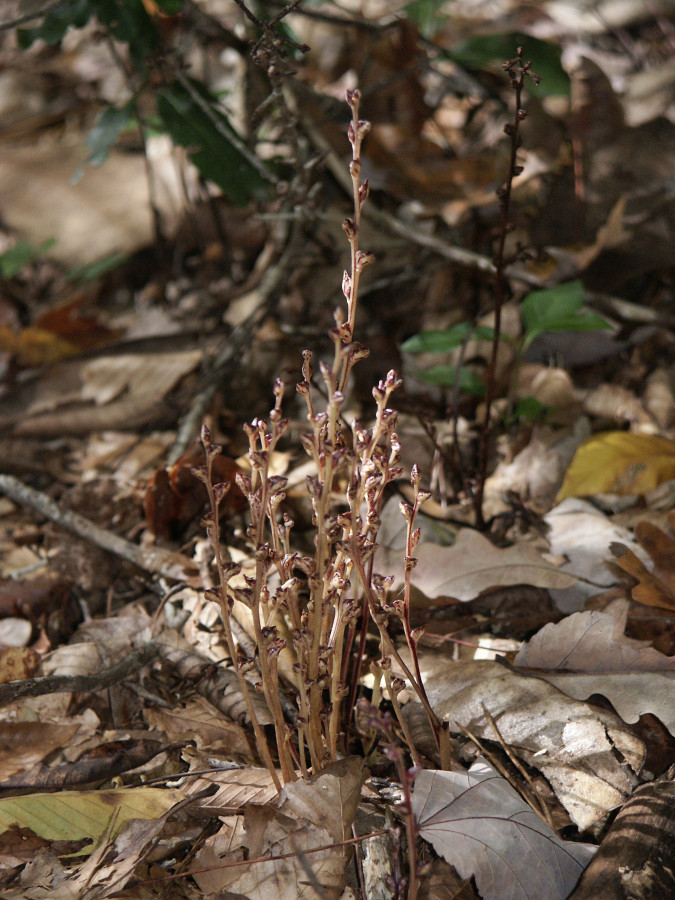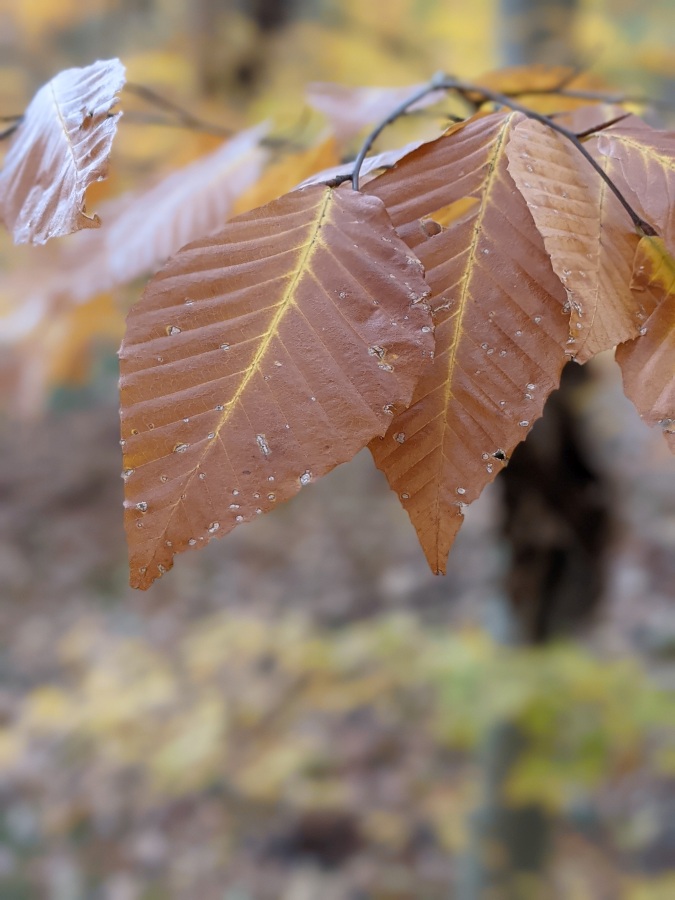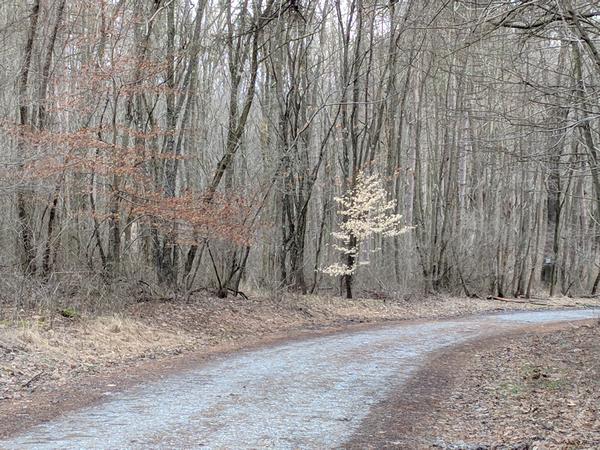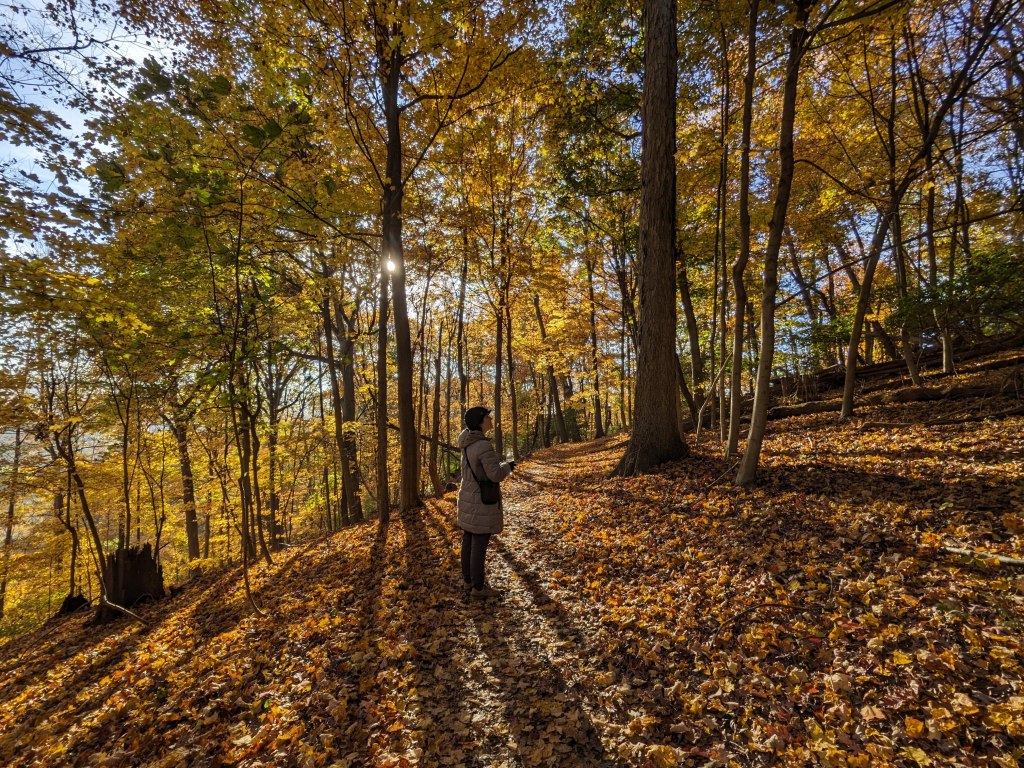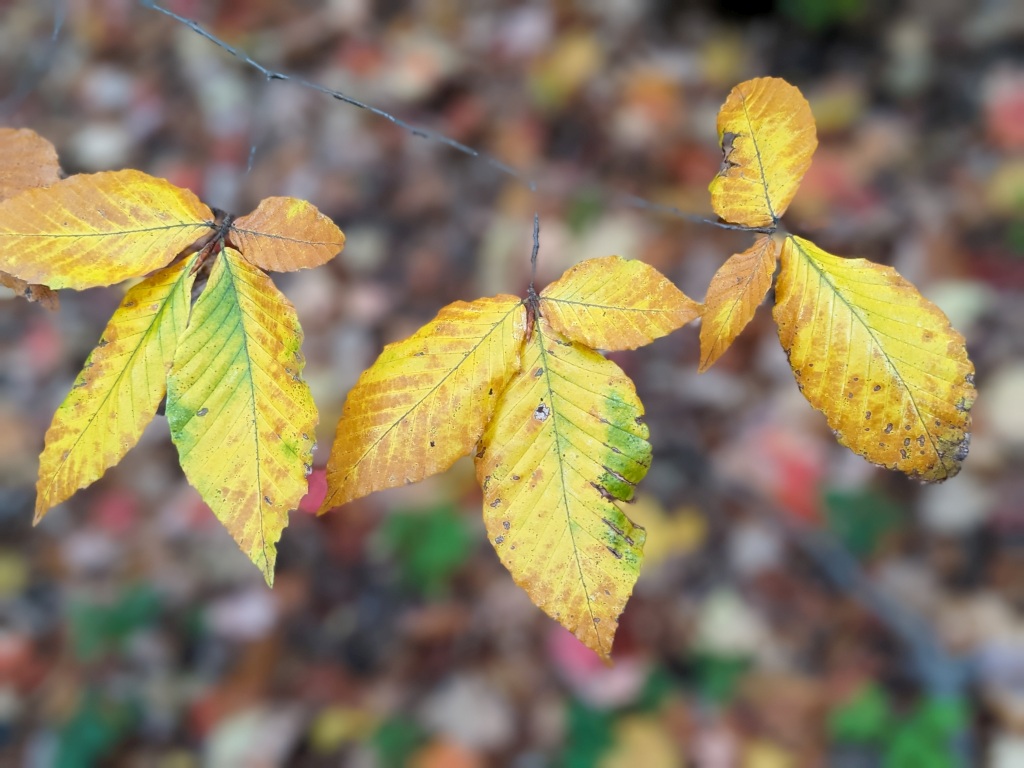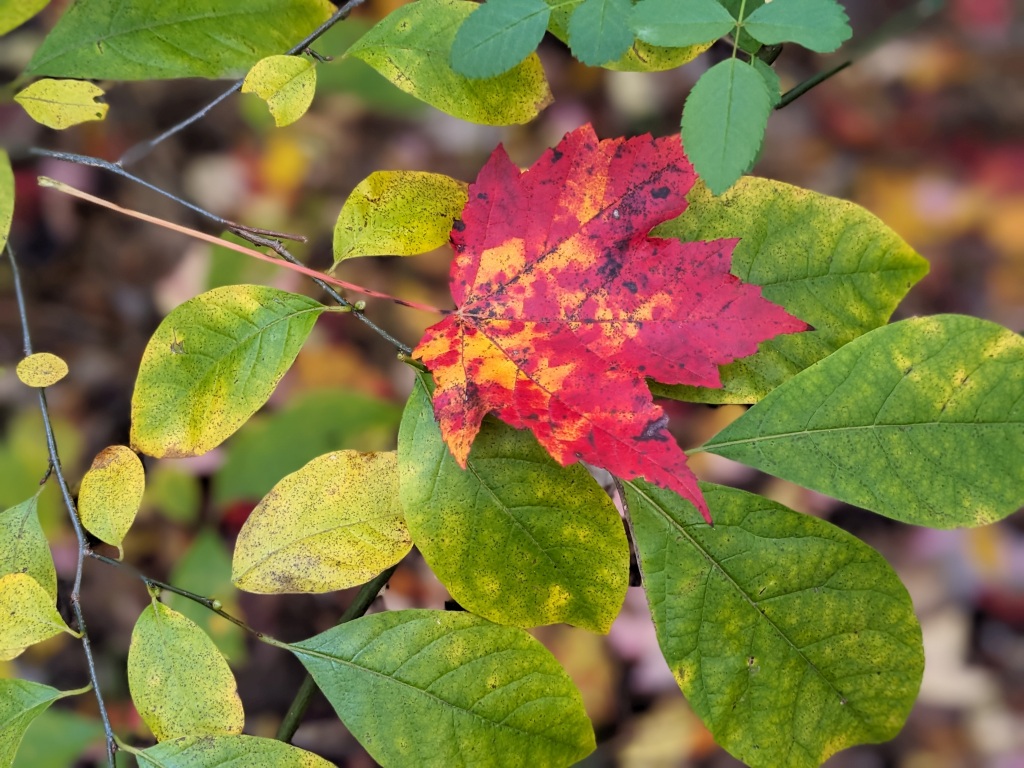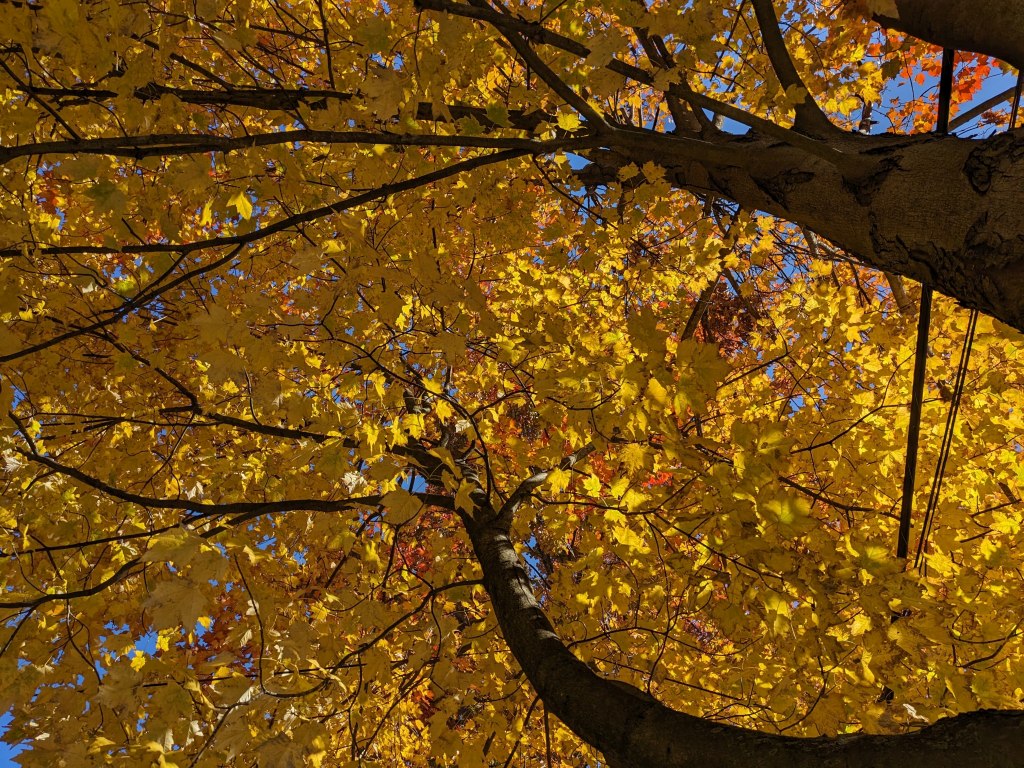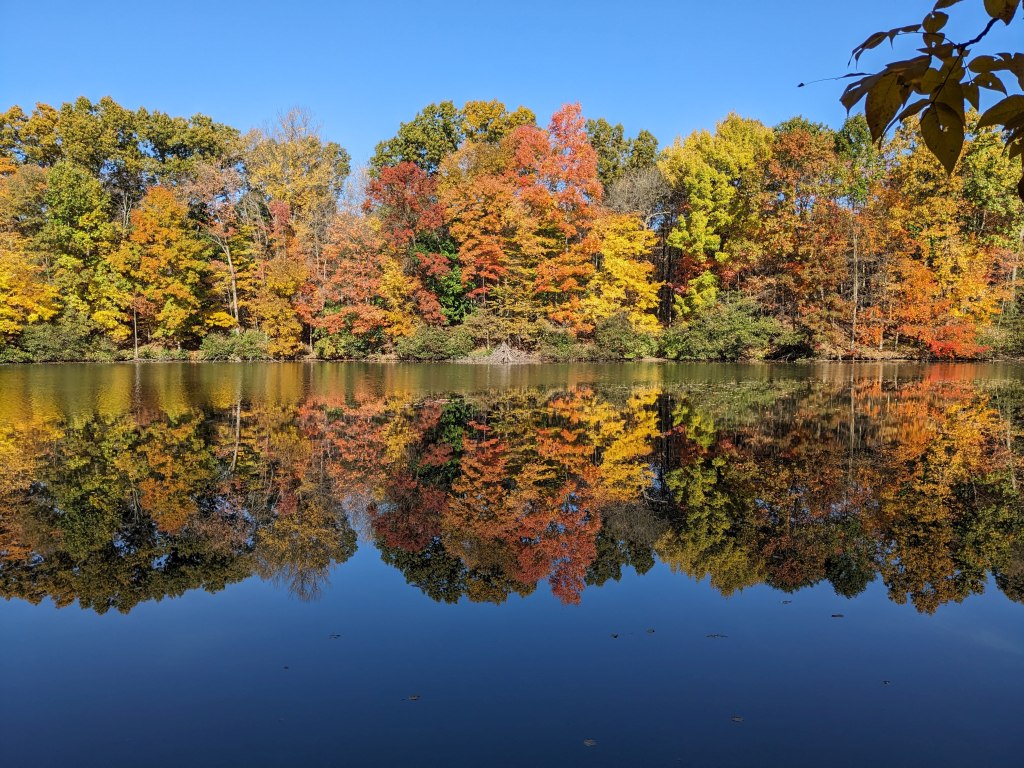
29 November 2023
The Nutty Series: Shagbark hickory
Last month shagbark hickories (Carya ovata) put on a show in Pittsburgh’s parks with bright yellow leaves and fallen nuts.
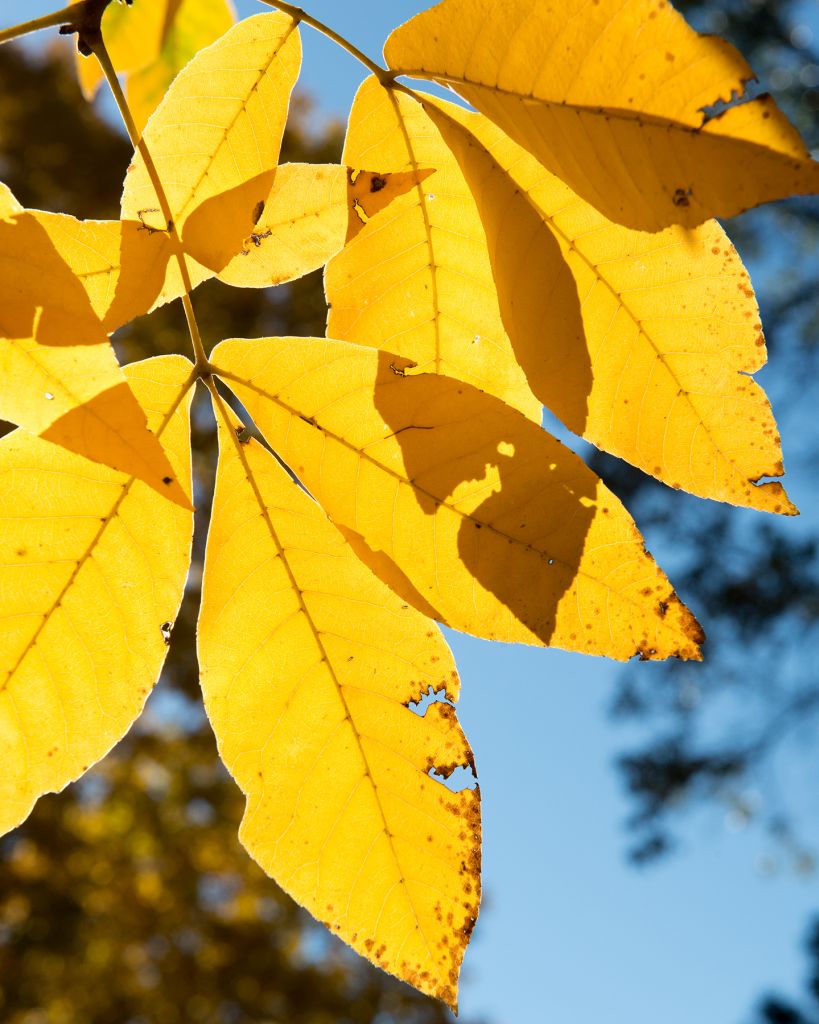
The thick green husks began to turn brown immediately and peel off in quarter-moon sections. This piece of husk sat indoors for more than a month before I took a photo of its interior. The dark brown exterior is visible at the bottom edge.
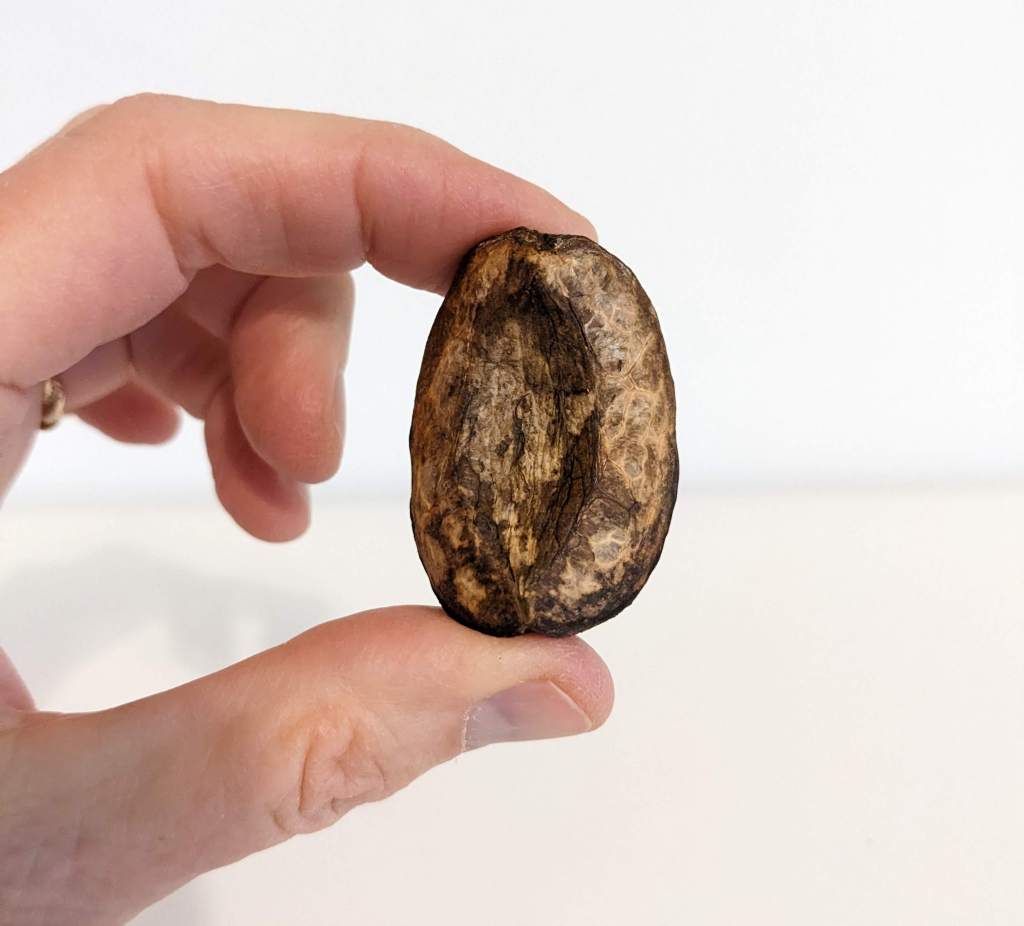
If a nut lasts through the winter its husk looks quite worn out by March. This one was probably uneaten for a good reason.

Shagbark nutshells are slightly oval with a remnant stem and four ribs. When I cracked open the nut I collected, it was a dud. Maybe an insect got to it. This Wikimedia photo of a sawed nut shows the meat.
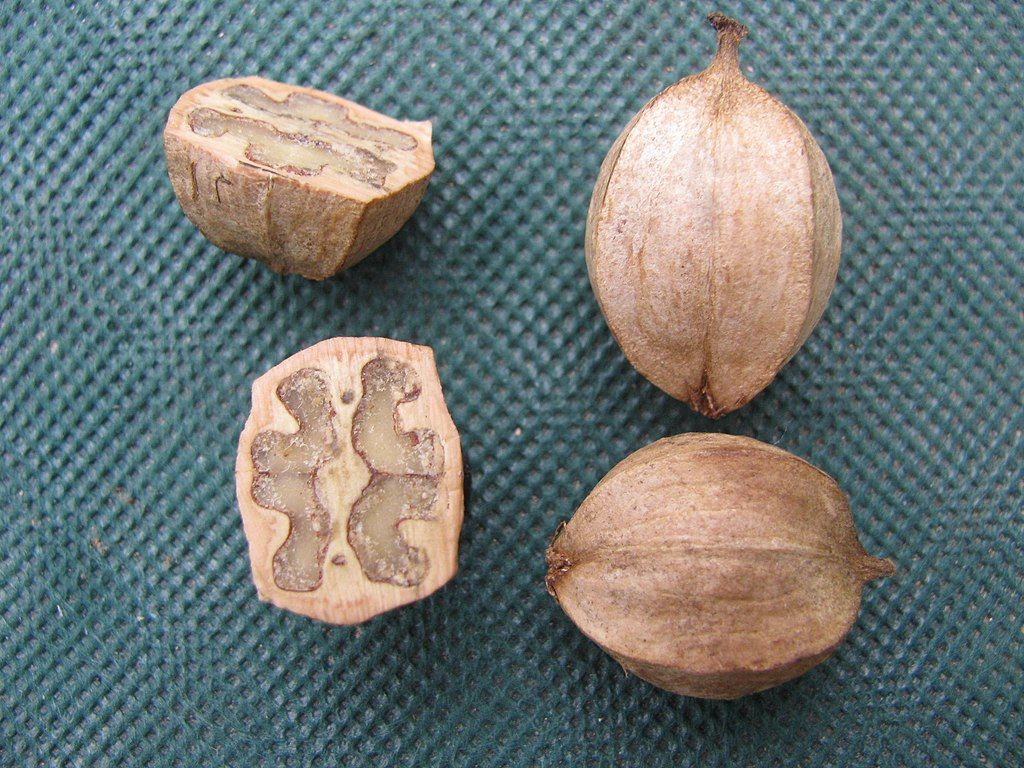
Though shagbark hickory nuts taste good and can substitute for pecans, shagbarks are not cultivated because …
They are unsuitable to commercial or orchard production due to the long time it takes for a tree to produce sizable crops and unpredictable output from year to year. Shagbark hickories can grow to enormous sizes but are unreliable bearers.
C. ovata begins producing seeds at about 10 years of age, but large quantities are not produced until 40 years and will continue for at least 100. Nut production is erratic, with good crops every 3 to 5 years, in between which few or none appear and the entire crop may be lost to animal predation.
— Wikipedia Shagbark Hickory account
Interestingly, shagbarks (Carya ovata) and pecans (Carya illinoensis) can hybridize in the wild though the hybrids usually don’t produce nuts.
Shagbark hickories are easy to identify by their shaggy bark. Just look up and you’ll see it peeling from the trunk. Young trees can fool you, though, because they have smooth bark (click here to see young bark).
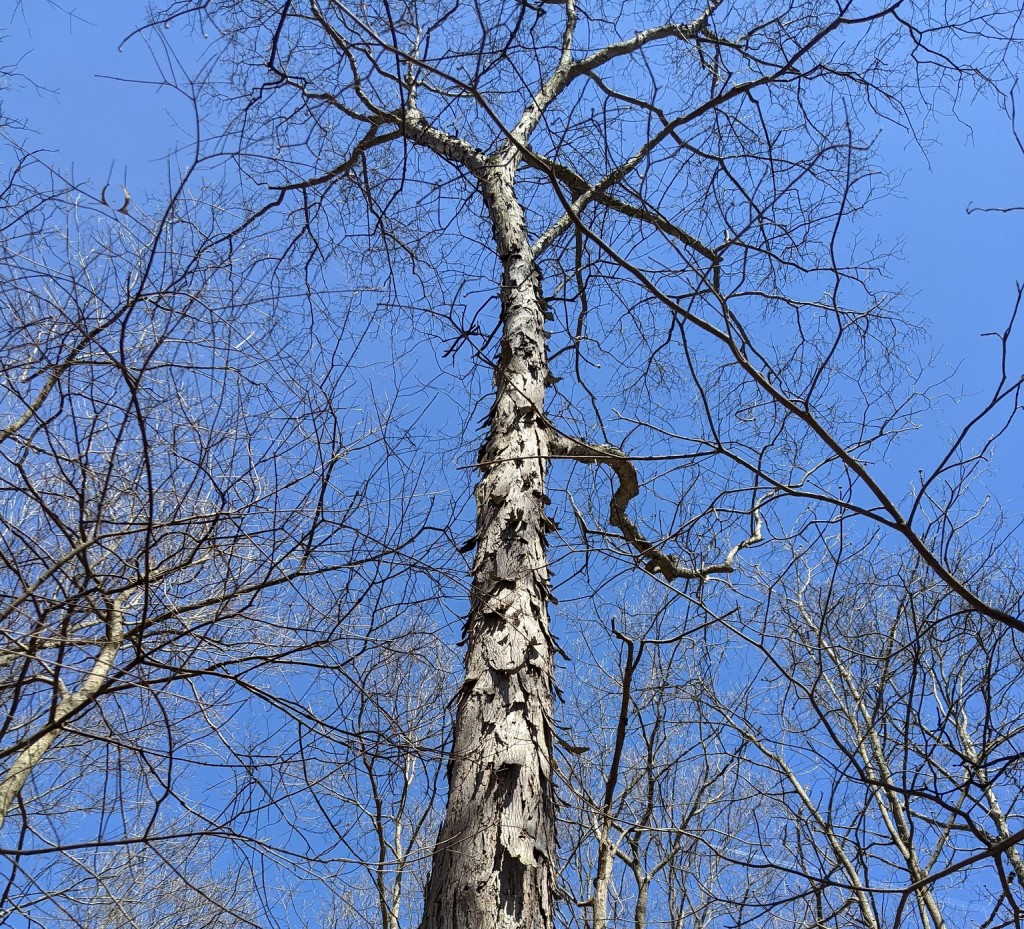
Shagbarks are one of the first native trees to leaf out so their sap runs early in the spring. Yellow-bellied sapsuckers (Sphyrapicus varius) take advantage of this and drill the trees as they migrate north. The birds move sideways around the trunk as they drill in a ring around the tree. The trees heal the wounds by producing callus tissue that grows outward, almost like lips. These attract the the sapsuckers who then drill the same rings year after year.
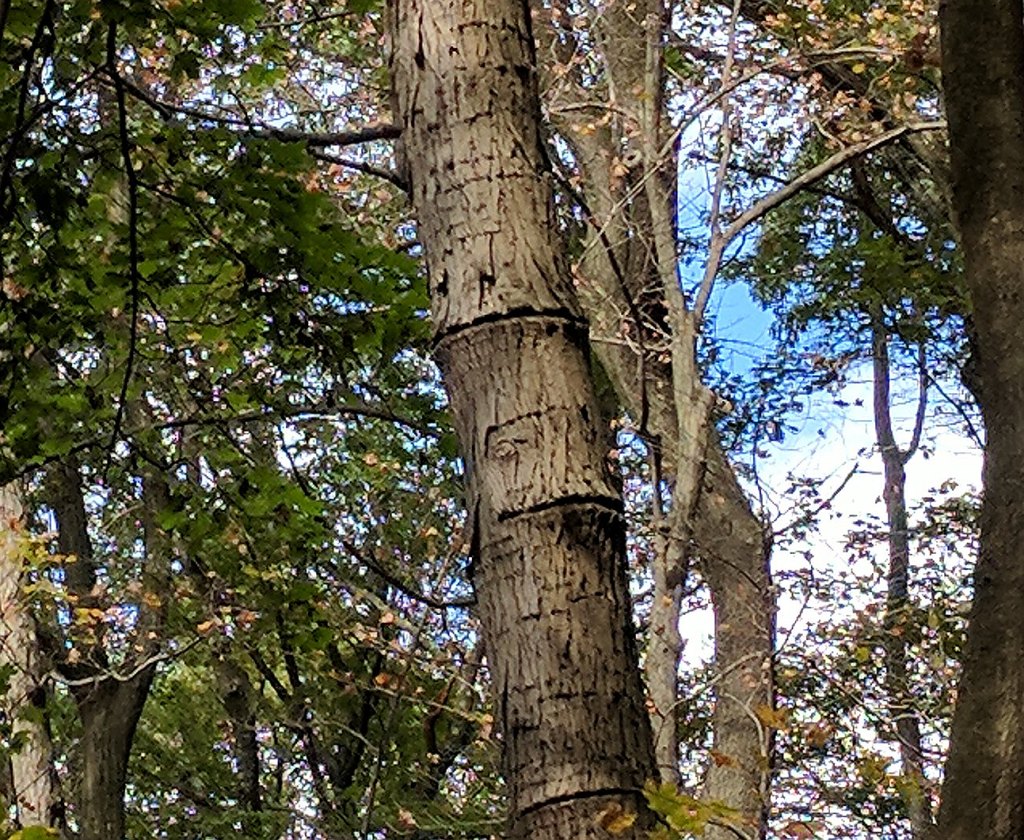
(credits are in the captions)
